-
The Hungarian Genius
Over the course of the last century Hungarian thinkers have created extraordinary innovations. For example did you know that the developers of the atomic bomb and nuclear engineering; holograph; the moon and mars rovers; the Model T Ford; Microsoft Office; the fathers of the seat belt and passive safety; binary code, BASIC and computer programming; supersonic flight and the U.S. aerospace industry; the California wine industry; the U.S. light cavalry; matches; color television; full-length motion pictures; jet propulsion; the carburetor and the automatic gearbox; the Zeppelin and the founder of Intel Corporation are all Hungarian-Americans?
And what about Joseph Pulitzer, of "Pulitzer Prize" fame? There's much more to his story. And can you believe there was a Hungarian Emperor of Madagascar? Finally, would you believe Hungary ranks 8th in the world in Olympic Medals.
This following list is far from inclusive, but exemplifies the Hungarian genius. Many of these names and inventions will surprise you. They sure surprised us. The number of these incredible people is astounding given the size of the Hungarian population, in the entire world, is less than 20 million.
Credit for this list must be given to Brian Dawson at The American Hungarian Federation.
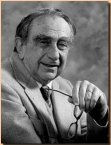
Edward (Ede) Teller
(born Jan. 15, 1908, Budapest - died Sept. 9, 2003, Stanford, California)
Physicist, instrumental in the Manhattan Project, Father of the the H-Bomb: co-developed the Atomic Bomb and Discovered BET equation.
Edward Teller is most widely known for his significant contributions to the first demonstration of thermonuclear energy; in addition he has added to the knowledge of quantum theory, molecular physics, and astrophysics. Young Edward was a mathematical prodigy. In 1926, Edward left Budapest to study chemical engineering in Karlsruhe, Germany. In Karlsruhe, Teller became intrigued by physics, particularly the new theory of quantum mechanics. After recovering from teh loss of his foot in a streetcar accident, he learned to walk with a prosthesis, and transferred to the University of Leipzig, to study with Werner Heisenberg, who was in the forefront of the new physics. Teller received his doctorate in physics in 1930 and took a job as research consultant at the University of Gottingen. His first published paper: "Hydrogen Molecular Ion," was one of the earliest statements of what is still the most widely held view of the molecule. Edward Teller made a major contribution to the development of the atomic bomb. Teller's friend Leo Szilárd enlisted Albert Einstein to bring this danger to the attention of President Franklin Roosevelt. Roosevelt appealed to the scientific community to mobilize for the defense of freedom. In 1941 Teller joined America's best physicists in the top secret Manhattan Project. Their mission: to develop the atom bomb before the Germans did. From the beginning, some scientists had feared that an uncontrolled nuclear reaction, like that of the proposed bomb, might continue indefinitely, consuming the earth. Teller's calculations reassured the team that the nuclear explosion, while enormously powerful, would only destroy a limited area.
TellerSeen here with President Kennedy accepting the National Medal of Science, Edward Teller managed Los Alamos research on the "Super," as he called the hydrogen bomb. Destruction of Hiroshima and Nagasaki in Japan and the end of World War II slowed "Super" research. Teller, a strong anti-Communist and sensitive to U.S. and Soviet relations, pushed unsuccessfully to accelerate work on a super-bomb. He was frustrated by the post-war direction of Los Alamos. He accepted a University of Chicago professorship and left Los Alamos in October 1945. In April 1946, Teller returned to Los Alamos and led a secret conference on the "Super." The conference reviewed his earlier work on fusion, which led to his full-time return to Los Alamos in 1949 to continue research on the hydrogen bomb. On January 31, 1950, President Truman approved hydrogen bomb development and testing, partly as a result of the first Soviet atomic test the previous August. Since 1975, Edward Teller has been senior research fellow at the Hoover Institute for the Study of War, Revolution and Peace at Stanford University. He is also Director Emeritus at the Lawrence Livermore National Laboratory.
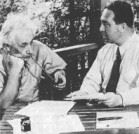
Leo Szilárd
(born Feb 11, 1898, Budapest - died May 30, 1964, La Jolla, California)
Physicist. Co-developed the Atomic Bomb, patented the nuclear reactor, catalyst of the Manhattan Project. Conceived the nuclear chain reaction and campaigned for nuclear disarmament, though the first to consider the application of the atom to making bombs. Achieved first sustained nuclear fission reaction with Enrico Fermi. Identified the unit or "bit" of information.
Szilard first realized the potential use of nuclear fission in an atomic bomb, and worked with Fermi on the first nuclear reaction. Seen here with Albert Einstein, his other ideas included the electron microscope, cyclotron, and linear accelerator. As an inventor, he even has numerous joint patents with Einstein. He proposed term "breeder" to describe an nuclear reactor and holds a joint 1955 US patent on the nuclear reactor with Enrico Fermi. In 1960, after a personal meeting with Soviet Premier Nikita Khrushchev, during Khrushchev's visit to New York, he proposed methods of reducing US-USSR tensions, including the Washington-Moscow "hotline." Shared Atoms for Peace Award with Eugene Wigner and devoted much of his life toward nuclear disarmament and preventing the harmful use of nuclear energy.
With Wigner, he convinced Einstein, the scientific community, and the President to start the Manhattan Project. Albert Einstein's 1939 letter to President Franklin Roosevelt urging development of an atomic bomb - the famous document that started the Nuclear Age - was not written by Einstein at all. It was ghostwritten for him by Szilard. In 1939, Szilard and Princeton scientist Eugene Wigner approached Einstein to ask a vital favor: Given his great stature, would he lend his name to the promotion of a serious study of nuclear energy's wartime applications and the design and construction of an atomic bomb? Einstein agreed, although he confessed relative ignorance about nuclear chain reactions.
Szilárd wrote a draft and presented it to him for his signature on Aug. 2. It spoke of the "vast amounts of power and large quantities of new radium-like elements [that] would be generated" by a nuclear chain reaction set off in a large chunk of uranium. The message finally went to Roosevelt. Later Einstein did write and sign two follow-up messages which, together with the first, led to the 1942 formation of the Manhattan Project, - which developed the bombs dropped on Japan in 1945. Szilárd was one of the project's guiding forces; Einstein had nothing whatsoever to do with it and wrote:
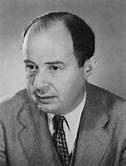
John von Neumann (Neumann Janos)
(born János Lajos Margittai Neumann on Dec 28, 1903, Budapest - died Feb 8, 1957, Washington, DC)
Legendary Mathematician, Physicist, Logician, and Computing Pioneer. Father of Binary Code and the Stored Program Computer, the keys to modern computer computer programming. Father of Game Theory. Proposed Implosion and co-developed the Atomic Bomb. Built a solid framework for quantum mechanics. Played a key role in the development of the U.S. ballistic missile program.
Education
Neumann was a child genius. When only six years old he could divide eight-digit numbers in his head. He learned calculus by eight and, amused everyone by memorizing phone book pages, and in 1911, entered the Lutheran Gymnasium (Senior Secondary School) where is recognized genius soon affords him special tuition. Incredibly at the same school, in the class just ahead Neumann's, was another genius, Eugene Wigner (below). In 1921, he enters the University of Budapest to study mathematics in 1921. But he did not attend lectures. Instead he simultaneously attended the University of Berlin that same year to study chemistry. Despite not attending his lectures, he still achieved outstanding results in Budapest. He received both his diploma in chemical engineering from the Technische Hochschule in Zürich and his doctorate in mathematics from the University of Budapest in 1926. In 1930 von Neumann became a visiting lecturer at Princeton University, being appointed professor there in 1931. He along with Einstein became one of the original six mathematics professors in 1933 at the newly founded Institute for Advanced Study (I.A.S.) in Princeton, a position he kept for the remainder of his life.
The ENIAC, Modern Computing, and Dr. Strangelove
Von Neumann was the center of the group who created the "stored program" concept that made truly powerful computers possible. A chance meeting brought him to work on the ENIAC (seen on the right). ENIAC had a big problem. It had no memory. As a consultant to Eckert and Mauchly on the ENIAC, he devised a concept for computer architecture that remains with us to this day. He conceived a fundamental idea that serves all modern computers - that a computer's program and the data that it processes does not have to be fed into the computer while it is working but can be kept in the computer's memory - a notion generally referred to as the stored-program computer. Known subsequently as the "von Neumann architecture", the stored-program computer (where both the instructions and the data they operate upon reside together in memory) with its central controller, I/O, and memory was outlined in a "Draft Report" and paved the way for the modern era of computing. When he died, the Secretaries of Defense, the Army, Air Force, and Navy and the Joint Chiefs of staff were all gathered around his bed, attentive to his last gasps of technical and policy advice.
Though he is widely known for his work with the Manhattan Project, Time Magazine writes: "virtually all computers today, from $10 million supercomputers to the tiny chips that power cell phones and Furbies, have one thing in common: they are all "Von Neumann machines," variations on the basic computer architecture that John von Neumann, building on the work of Alan Turing, laid out in the 1940s. Men have become famous for less. But in the lifetime of this Hungarian-born mathematician who had his hand in everything from quantum physics to U.S. policy during the cold war, the Von Neumann machine was almost the least of his accomplishments...As rivalry with the Soviet Union heated up, Von Neumann became a strategic adviser on defense policy. He was appointed by President Dwight D. Eisenhower to the Atomic Energy Commission, which oversaw the postwar buildup of the U.S. nuclear arsenal. Von Neumann's game theory became a tool to analyze the unthinkable--global nuclear war--and led to the doctrine of "mutually assured destruction," which would shape U.S. strategy for the next two decades. Von Neumann also became an icon of the cold war. Disabled with pancreatic cancer, he stoically continued to attend AEC meetings until his death in 1957. The wheelchair-bound scientist with the Hungarian accent who mathematically analyzed doomsday is said to have been a model for Stanley Kubrick's Dr. Strangelove."
The Manhattan Project and US Government
During and after World War II, von Neumann served as a consultant to the armed forces. His valuable contributions on the Manhattan Project included a proposal of the implosion method for bringing nuclear fuel to explosion, his participation in the development of the hydrogen bomb and his use of his extensive knowledge of hydrodynamics to attempt to create an isotope of uranium with great potential for energy. Howard Feingold writes, "Von Neumann was a very important, probably indispensable, member of the Manhattan Project scientific team. Oppenheimer, Fermi, Teller, Bohr, Lawrence, and the other members of the most gifted scientific gathering of minds in history were as awed by Johnny's intellect as anyone else who ever met him. More impressively, they were as reliant on his mathematical judgment as anyone else. In that galactic cluster of world-class physicists, chemists, mathematicians, and engineers, it was a rare tribute that von Neumann was put in charge of the mathematical calculations upon which all their theories--and the functioning of their "gadget"--would depend."
From 1940 he was a member of the Scientific Advisory Committee at the Ballistic Research Laboratories at the Aberdeen Proving Ground in Maryland. He was a member of the Navy Bureau of Ordnance from 1941 to 1955, and a consultant to the Los Alamos Scientific Laboratory from 1943 to 1955. From 1950 to 1955 he was a member of the Armed Forces Special Weapons Project in Washington, D.C. Von Neumann ended up a key policy-maker in the fields of nuclear power, nuclear weapons, and intercontinental ballistic weaponry. In 1953 he became chairman of the Air Force Strategic Missiles Evaluation Committee. He was appointed Director of the Atomic Energy Commission and Chaired the Atlas (later ICBM) Scientific Advisory Committee which monitored Atlas progress and sought to speed up development of Intercontinental Ballistic Missiles. As chairman of both committees, Dr. von Neumann proposed the practicality of using ballistic missiles to deliver nuclear weapons. He believed the Soviets had an edge in the development of an intercontinental ballistic missile and predicted a significant missile gap between the United States and the Soviet Union by the late 1950s. Without greater funding, research and development of an operational Atlas ICBM was scheduled for earliest completion in 1963. Based on recommendations by the von Neumann committees and persuasion by Trevor Gardner (the Air Force Assistant Secretary for Research and Development), the United States pressed forward with its missile program at a faster rate and successfully launched an Atlas missile in December 1958.
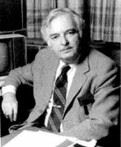
John Kemény (Kemény János)
(born May 31, 1926, Budpapest - died Dec. 26, 1992, Hanover, New Hampshire)
Mathematician, President of Dartmouth, Leader and innovator in mathematics education, and "Father of Microcomputing": Developed BASIC computer language. Manhattan Project Mathematician at 17!
Dr. Kemény developed Beginner’s All-Purpose Symbolic Instruction Code (BASIC) in 1964, along with Thomas Kurtz, because the pair wanted a simple computer language. BASIC is often considered the beginner’s bible in computing, and is included with almost every microcomputer. However, the language has numerous variations because the two men didn’t copyright it. In the 1980s, they developed True BASIC, a more powerful version of BASIC that met ANSI and ISO standards.
Contributor Steve Colman writes: "John Kemeny's claim to fame was that he was a class mate of mine at the Berzsenyi Daniel High School, then on Marko utca. At age 13, when I was already well established as the class dunce, he was discovered to be a genius. In August 1939 he left for USA, where at age 17 he was called up as a soldier and sent to be a mathematician on the Manhattan Project (Atom bomb). [Following the war, he returned to Princeton and in 1947 received his B.A. summa cum laude, Phi Beta Kappa.] [While working on is PhD., ] he became an assistant to Albert Einstein [at the Institute for Advanced Study.] ...He became the "Father of Microcomputing" due to his (and Tom Kurtz's) writing the code of BASIC. He was a well known mathematician, wrote several books and became President of Dartmouth [in 1970 on one condition: that he be allowed to continue teaching Philosophy and Mathematics.] A heart attack killed him in 1992. Kemény's brother-in-law was George Mikes, a fellow Hungarian who is very well known as the author of "How to be an Alien" and other bestsellers. He should also be on your list." Now he is [hipcat]
Many awards and honors were bestowed on Kemeny. He was given the New York Academy of Sciences Award in 1984, the Institute of Electrical Engineers Computer Medal in 1986 and the Louis Robinson Award on 1990. He received twenty honorary degrees.
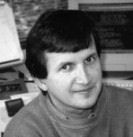
Charles Simonyi
(born Sept. 10, 1948, Budapest)
Father of WYSIWYG and Hungarian Notation, and now an Astronaut.
During the 1970s at Xerox PARC, Charles Simonyi led a team of programmers in the development of Bravo, the first WYSIWYG (What You See Is What You Get, pronounced wizzywig, i.e. MS Word) word processing editor. Bravo was a fundamental departure from the way information was previously displayed and organized and it was part of PARC's contribution that changed the face of computing and ultimately led to personal computing.
Simonyi, born in Budapest, Hungary, holds a bachelor of science degree in engineering mathematics from the University of California at Berkeley and a doctorate in computer science from Stanford University. He worked for the Xerox Palo Alto Research Center from 1972-80 and joined Microsoft in 1981 to start the development of microcomputer application programs. He hired and managed teams who developed Microsoft Multiplan, Word, Excel, and other applications. In 1991, he moved to Microsoft Research where he has been focusing on Intentional Programming.
Dr. Simonyi, whose long career has made him independently wealthy, has endowed two chairs: the Charles Simonyi Professorship For The Understanding Of Science at Oxford University which is held by the evolutionary biologist Richard Dawkins; and the Charles Simonyi Professorship in Theoretical Physics at the Institute for Advanced Study.

Farkas (Wolfgang) Kempelen de Pázmánd
(born 1734 Pozsony then capital of Hungary - died Vienna in 1804)
Inventor - First Speaking Machine - first experimental phonetician
His main concern was the study of human speech production, with therapeutic applications in mind. He has been called the first experimental phonetician. He was first to observe minute movements in formation of spoken sounds and in 1788 constructed first "speaking machine." In his book Mechanismus der menschlichen Sprache nebst Beschreibung einer sprechenden Maschine (1791) he included a detailed description of his speaking machine - in order for others to reconstruct it and make it more perfect. The drawings shown here to the right are taken from this book. Von Kempelen's machine was the first that allowed to produce not only some speech sounds, but also whole words and short sentences. It used a bellows to supply air to a reed which, in turn, excited a single, hand-varied resonator for producing voiced sounds. Consonants, including nasals, were simulated by four separate constricted passages, controlled by the fingers of the other hand. An improved version of the machine was built from von Kempelen's description by Sir Charles Wheatstone (of the Wheatstone Bridge, and who is credited in Britain with the invention of the telegraph). This early phonograph is on display at Deutsches Museum in Munich.
The genial Kempelen worked in almost every branch of technical science. He organized the textile industry in the South of Hungary, and built the Pozsony bridge of pontoons in the North, Kempelen was the first to experiment with the use of printed letters for teaching the blind in Paris. Kempelen amazed the world with his "chess-playing machine," with which he traveled throughout Europe, astonishing even Napoleon. The Emperor is said to have lost his game with the machine, upon which he swept the figures off the board in frustration. The secret of this machine was never revealed.
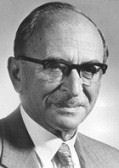
Dennis Gábor (Gábor Dénes)
(born Jun. 5, 1900, Budapest - died Feb. 8, 1979, London)
Nobel Prize in 1971 for his investigation and development of holography.
Dr. Dennis Gabor was born in Budapest, Hungary, on June 5, 1900, the oldest son of Bertalan Gabor, director of a mining company, and his wife Adrienne. His life-long love of physics started suddenly at the age of 15. Fascinated by Abbe's theory of the microscope and by Gabriel Lippmann's method of colour photography, he, with his late brother George built up a home laboratory and began experimenting with wireless X-rays and radioactivity. He entered the Technische Hochschule Berlin and acquired a Diploma in 1924 and his Doctorate of Engineering in 1927 in electrical engineering. While there he spent his free time working on physics at the University of Berlin. His doctorate work was the development of one of the first high speed cathode ray oscillographs and in the course of this, made the first iron-shrouded magnetic electron lens. In 1927 he joined Siemens & Halske AG and made one of his first successful inventions; the high pressure quartz mercury lamp with superheated vapour and the molybdenum tape seal, since used in millions of street lamps. In what Dennis calls his "first lesson in serendipity," he invented the mercury lamp while attempting to develop a cadmium lamp which proved unsuccessful.
With the rise of Hitler In 1933, Dennis left Germany and after a short period in Hungary went to depression stricken England. Finding a jobs as a foreigner was very difficult. He eventually obtained employment with the British firm, Thomson-Houston Co., in Rugby, on an inventor's agreement. His work on gas discharge tubes gave him a foothold in the BTH Research Laboratory where he remained until the end of 1948. Dennis writes that the years after the war were the most fruitful. One his first papers was on communication theory. He also developed a system of stereoscopic cinematography, and in the last year at BTH carried out the basic experiments in holography, at that time called "wavefront reconstruction."
On January 1, 1949 he joined the Imperial College of Science & Technology in London, first as a Reader in Electronics, and later as Professor of Applied Electron Physics, until his retirement in 1967. With post-graduate assistants, he attacked many problems, almost always difficult ones. Developments included: a holographic microscope; a new electron-velocity spectroscope; an analogue computer which was a universal, non-linear "learning" predictor, recognizer and simulator of time series; a flat, thin colour television tube; and a new type of thermionic converter. Theoretical work included communication theory, plasma theory, magnetron theory, and a scheme of fusion.
After his retirement in 1967 he remained connected with the Imperial College as a Senior Research Fellow and became Staff Scientist of CBS Laboratories, Stamford, Conn. where he collaborated with the President, life-long friend, and father of the color television, Dr. Peter C. Goldmark, in many new schemes of communication and display.

Tivadar Puskás
(born Sep. 17, 1844, Pest - died Mar. 16, 1893, Budapest)
Inventor, Telephone Pioneer / Thomas Edison's Colleague - Devised the idea of using telephone exchanges between subscribers, invented the switchboard and built Europe's first telephone exchange. Inventor of the Telephonograph (forerunner to radio) and Telephone News.
In 1874, after a successful Travel Agency enterprise in Vienna, he travels to America by ship. Buys some land in the gold-fields of Colorado and starts searching for gold. In New York he gets acquainted with Edison and Edison's invention, the carbon microphone. There it occurred to him to set up a central exchange which would be suitable for connecting several persons talking. In 1876 he travels to London and Brussels where he is involved in discussions about the latest telegraphs and the development of a telegraphic network for cities. At the news of Edison's invention, he returns to America where he becomes Edison's collaborator and is engaged in working out the details of the telephone exchange.
In 1877 he goes to London on behalf of Edison to register the patent for the phonograph. In 1878 he moves from London to Paris. On the continent, as Edison's representative, he has dealt with every patent. In addition, Puskás worked on the electric lighting of London (1882) and the telephone network in Madrid (1883). Apart from this he sets up his own enterprise: an agency for selling patents. The main reason for him moving to Paris is to build a telephone exchange, the first in all of the capitals of Europe, where in 1879, he built Europe's first.
In Budapest, the world's fourth exchange commenced operating in 1881. It was in this city that another of Puskás's inventions, "the speaking newspaper" (Telefonhírmondó), was first put into practice on February 15, 1893, sending news and music to subscribers as a forerunner of modern telecommunications. Puskas was a genius of online content: His service featured up-to-the-minute stock reports and sports results, live music, a newsroom delivering late-breaking news, and programming for children. Pundits of the time, as Thomas White's online archives reveal, sounded a lot like pundits today. "Will the newspaper always remain in a form now so familiar," pondered a reporter for the Living Age in 1903, "and will the news always be printed from type upon paper?" A similar venture had already installed theatrophones in fashionable Paris hotels and cafes. Subscriber lines also were strung across London; Queen Victoria had one in her sitting room.
He coined the term "Hello" an Englishized version of "Hallom" which means "I hear you" - his famous words to Edison on the successful test of his new invention, the telephone.
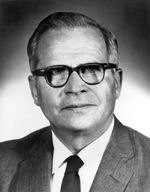
Peter Carl Goldmark (Goldmark Péter Károly)
(born December 2, 1906, Budapest – died December 7, 1977, Port Chester, New York)
Engineer, CBS Chief Scientist - Invented the Color Television, 33 1/3 LP Record, and the Electronic Video Recorder! National Medal of Science
"Peter had more ideas in a day than most others in a lifetime" - CBS President, Frank Stanton.
Dr. Goldmark, responsible for over 160 inventions in his storied career, studied at the University of Vienna (B.S., 1929, Ph.D., 1931) and from 1931–33 worked for a radio company in England. After emigrating to the United States in 1933, he worked as a construction engineer until joining the Columbia Broadcasting System (CBS) in 1936. There he developed the first commercial color television system, which used a rotating three-color disk, and announced in 1940 that CBS had a marketable color television and broadcasted in New York.
Although initially approved by the Federal Communications Commission, RCA, which had invested heavily in black-and-white technology, used its lobbying clout to keep the FCC from adopting the CBS system. Goldmark also developed the 33 1/3 LP phonograph record that greatly increased the playing time of records. The LP Phonograph record may not not seem exciting in this, the age of the compact disc, but when Peter Goldmark perfected it in 1948, music lovers rejoiced. Even more crucial, perhaps, was that Goldmark's record was made of vinyl, rather than the shellac-and-clay blend previously employed. Plastics discs were not only tougher and less noisy, but also allowed for narrower grooves and therefore more music - up to half an hour per side. Finally, audiophiles could settle in for a nice long listen.
Later, Goldmark would achieve fame for the first electronic video recording system—the forerunner for the VCR in your home today. He became the chief engineer and President of CBS’s Laboratory in 1954. He also developed a scanning system used by the Lunar Orbiter spacecraft in 1966 to transmit photographs to the earth from the moon. CBS received credit for all of his work. As a result, Goldmark has not been given the recognition he deserves.
Other inventions included Chrysler's Highway Hi-Fi, found in Chrysler automobiles from 1956 to 1959, featuring a turntable for playing records, built for Chrysler by CBS-Columbia, located in a shock-proof case mounted just below the center of the instrument panel. A tone arm, including sapphire stylus and ceramic pick up, plus storage space for six long-play records made up the unit./p>
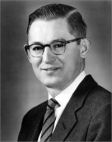
Benjamin Lax
(born Miskolc, Hungary, Dec. 29, 1915)
Electrical Engineer / Physicist: Founder and Director of Francis Bitter National Magnetic Laboratories (MIT); Professor of Physics, Emeritus (MIT); Semiconductor and magneto-optics pioneer; Radar Pioneer: developed the radar height finder and discovered radar meteorology.
Settling in the USA in 1926, Lax received a BS. Degree in mechanical engineering from Cooper Union in New York ('41). In WWII he was a radar officer assigned to the MIT Radiation Laboratory. Arriving at the MIT Radiation Laboratories in March 1944, Lax worked on Li'l Abner, the X-band height and range finder.
After the war, Lax went back to graduate school, this time for his Ph.D. in physics at MIT. As early as 1955 Lax realized that the creation of continuous and stabile magnetic fields of the order of 250,000 gauss or more would open up an entire new area of research into basic physics. Together with his colleges, he had convinced the Air Force to establish a National Magnet Laboratory at MIT for this purpose. In 1960, after the contract was awarded to build this laboratory, he became its director.
He was instrumental in starting the semiconductor laser effort at Lincoln Laboratories. His experiments led to the basic understanding of silicon and related semi-conductors. Borrowing techniques he developed in working with microwave gas discharges, Lax pioneered the important phenomenon of cyclotron resonance in semiconductors. He then extended these techniques to high magnetic fields (MR) and to the infrared and opened up a new field of modern magneto-optics in semiconductors and semi-metals. For this 'fundamental contributions to microwave and IR spectroscopy of semiconductors' he received the 1960 Oliver E. Buckley Prize of the American Physical Society.
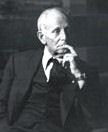
János (Hans) Selye
(born Jan. 26, 1907, Vienna - died Oct. 16, 1982, Montreal)
Physician, Endocrinologist, Researcher - Founder of the concept of Stress: The "Einstein of Medicine!"
Dr. Hans Selye was the pioneer in research into stress. Selye's mother was Austrian but his father was a Hungarian doctor in the army. His father was moved to Komárom (now called Komarno after Czech and Slovak annexation) after World War I, so the young Selye attended elementary and secondary school there. As early as his second year of medical school (1926), he began developing his now-famous theory of the influence of stress on people's ability to cope with and adapt to the pressures of injury and disease. He discovered that patients with a variety of ailments manifested many similar symptoms, which he ultimately attributed to their bodies' efforts to respond to the stresses of being ill. He called this collection of symptoms--this separate stress disease--stress syndrome, or the general adaptation syndrome (GAS).
He spent a lifetime in continuing research on GAS and wrote some 30 books and more than 1,500 articles on stress and related problems, including Stress without Distress (1974) and The Stress of Life (1956). So impressive have his findings and theories been that some authorities refer to him as "the Einstein of medicine."
He was the first director of the Institute of Experimental Medicine and Surgery, Université de Montréal (1945-76). After retiring from the university, he founded the International Institute of Stress in 1977, in his own home in Montreal where he would spend 50 years studying the causes and consequences of stress. More than anyone else, Selye has demonstrated the role of emotional responses in causing or combating much of the wear and tear experienced by human beings throughout their lives.
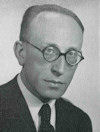
Jozsef Dallos
(born 1905 - died 1979, London)
Physician - Invented the "Living Eye Impression Method" and developed the First Practical Contact Lenses.
Dallos developed a moulding technique using Negocol and Hominite - the first method to be used on the living eye to produce a successful contact lens. In 1827 English astronomer Sir John Herschel suggests grinding a contact lens to conform exactly to the eye's surface. It wasn't until 1929 that Dr. Dallos perfected a method of making molds from living eyes. This enabled the manufacture of lenses that, for the first time, conformed to the actual shape of the eye. He also developed novel fitting techniques and created fluidless lenses.
Dallos invented a glass-moulding technique that allowed the lens to take on the characteristics of the sclerotic membrane. He made a copy of the eye’s top layer using a thin copperplate and moulded the molten glass over its surface. After cutting to size, he placed the rough shell on the eye and continued to correct slight imperfections by grinding. Finally he ground the optical effect into the area directly over the cornea. He made such lenses for several of his patients that could be used for even more longer hours.
In 1973, Dallos emigrated to London where he earned worldwide acclaim. George Nissel in London, Dallos’ brother-in-law, produced high quality lenses and Nissel laboratories still exists in England. Dallos was a real pioneer in scleral lenses and was one of the first to recognize and discuss internal or lenticular astigmatism. A commemorative plaque to Josef Dallos was unveiled at 18 Cavendish Square, London, on 23 June 2010.
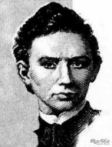
János Bolyai
(born Dec. 15, 1802 Kolozsvár, Hungary - died Jan. 27 1860, Hungary)
Mathematician - Discovered non-Euclidian hyperbolic geometry while at the University of Kolozsvár.
Bolyai was educated by his father, famed matmematician Farkas (Wolfgang) Bolyai, in Marosvásárhely and by the time he was 13 had mastered calculus and other forms of analytical mechanics. Bolyai also became an accomplished violinist and he performed in Vienna. He received military training and studied at the Imperial Engineering Academy in Vienna from 1818 to 1822. Immediately after this he joined the army engineering corps in which he spent 11 years. He was the best swordsman and dancer in the Austrian Imperial Army. He neither smoked nor drank, not even coffee, and at the age of 23 he was reported to still retain the modesty of innocence. He was an accomplished linguist speaking nine foreign languages including Chinese and Tibetan.
János Bólyai's absolute geometry laid the foundations of modern geometry by resolving the 2000 year old problem of geometry. It opened new horizons in mathematics,. physics, and even in philosophy since it refuted the Kantian concept of "a priori space." Bolyai was plagued with a fever which frequently disabled him and in 1833 he was pensioned off from his army career. Although he never published more than the 24 pages of the Appendix he left more than 20,000 pages of manuscript of mathematical work when he died. These are now in the Bolyai-Teleki library in Marosvásárhely (Tirgu-Mures).
"János Bólyai, more explicitly than Riemann, almost a century ahead of General Relativity, pointed at a possible connection between gravity and geometry, proving thereby his deep insight into the understanding of the laws of nature" - Zoltan Bay
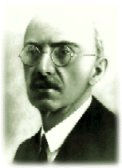
Kálmán Kandó
(born Jul. 10, 1869 - Jan. 13, 1931)
Inventor/Engineer - Discovered triple phase high tension current for electric locomotion and industrial applications. He is the Father of Modern Electric Trains.
He attended high school in Budapest, and obtained his diploma as a mechanical engineer at the Budapest Technical University. He worked in France as a junior engineer designing and developing Tesla's induction motor. András Mechwart (the Ganz factory's managing director at that time) called Kandó to return home in 1894. Shortly afterwards, Kandó designed the three-phase motor and generator series. Following these successful achievements at home he worked in Italy, later returning to Budapest to work at the Ganz factory where he became the managing director. One of the sensations of the summer season in 1898 was a small electric train carrying the guests of a French lakeside hotel at Evian Les Bains to and fro the close-by medicinal spring. The motor wagon was supplied by the Budapest-based Ganz Factory. The "S"-shaped track was merely 300 meters long, the train ran only at a speed of 10 km/hour, yet, its novel construction aroused great interest. It was designed by a 29-year-old engineer, Kálmán Kandó, who had been already working on a project of much greater size, the electrification of the Northern-Italian Valtellina Railway...
A total of 30 percent of this 106 km long line ran through tunnels and half of it ran along curves. For the first time in railway history, Kandó applied high-voltage, 15-period, 3-phase system for electric traction, a daring solution at that time. Kandó's brilliance in both mechanical and electric engineering allowed him to work out all the details of his concept alone. The Valtellina line was opened on September 4, 1902 and its success earned great international recognition for Kandó.
At the end of World War I, Kandó pointed out that railway electrification is "only one chapter in the great problems of energy management and can be tackled successfully only within this context". His research focused on creating large energy systems, in which electric current generated for lighting and industrial use, were also used for electric haulage. He worked out a revolutionary system of phase-changing haulage, whereby locomotives were powered by the standard, 50-period, single-phase alternating current used in the national energy supply system. By integrating the electric power needs of the railways, the industry and the public, Kandó managed to find the ideal solution for energy rationalisation for any country. Kandó's invention of the phase-changing electric locomotive undoubtedly opened a new epoch in the history of railway development.
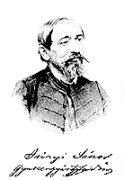
János Irinyi
(born May 17, 1817, Nagyléta, Hungary - died 1895)
Chemist - Invented safety matches.
János Irinyi was born in Nagyléta, attended middle school in Nagyvárad and later studied law in Debrecen. He acquired his chemical knowledge at the Vienna Polytechnikum. During one of his professor's experiments, he solved the puzzle of making silent matches. After long hours of experimentation he patented his invention of silent and non-explosive matches in 1836. In the heads of the matches he mixed phosphor with lead dioxide instead of calcium chlorate. Irinyi sold his invention to a manufacturer of matches and went for a study tour abroad. He became a student at the famous Agricultural College in Berlin. After returning home he founded the first factories for matches in Pest in different parts of the city. He wrote several articles on chemistry and published his textbook for schools entitled The Elements of Chemistry.
Irinyi played an important part in the revolution of 1848 and 49. After assisting his brother with drafting the 12 points outlining the reasons for Hungary's desire to break with Austria, Louis Kossuth (the Father of Hungarian Democracy and leader of the revolution) assigned him to direct the manufacture of guns and gunpowder, and put him in charge of supervising the national factories. After the failed revolution he was sentenced to jail. When he won freedom he retired from political life and continued his scientific work exclusively.
In the realm of common knowledge only his association with matches is remembered. Yet Irinyi was one of the first people to spread general knowledge about the new chemistry, and played a significant part in the development of the Hungarian technical language of chemistry.
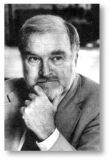
Mihály Csikszentmihályi
(born Sep. 29, 1934, in Fiume, Italy – now Rijeka, Croatia)
Renowned Psychologist - Father of "Flow Theory," former Chair of University of Chicago's Department of Psychology, and Bestselling Author.
Professor Mihaly Csikszentmihalyi (pronounced "ME-high CHEEK-sent-me-high-ee"), of Transylvanian descent, seeks to answer what makes "creative" people creative. His primary interests are in the study of creativity, especially in art; socialization; the evolution of social and cultural systems; and the intrinsically rewarding behavior in work and play settings.
The Hungarian-born polymath and currently the Davidson Professor of Management at the Claremont Graduate University, in Claremont, California has been thinking about the meaning of happiness since a child in wartime Europe. His research and theories in the psychology of optimal experience seek to find out how creativity has been a force in our lives and have revolutionized psychology, and have been adopted in practice by national leaders such as Bill Clinton and Tony Blair as well as top members of the global executive elite who run the world's major corporations. In the pages of Newsweek, President Clinton named him one of his favorite authors. Speaker of the House Newt Gingrich put his work on the reading list for a political planning committee. And corporations and cultural institutions - from Volvo in Sweden to the Chicago Park District to the political leadership of Austria - have seized upon his ideas and how to apply them because his findings have much to offer anyone interested in improving his or her understanding of how people can perform optimally in every area of life.
In his bestselling book, "Flow: The Psychology of Optimal Experience," Professor Csikszentmihalyi interviewed 91 creative people like actor Ed Asner, scientist Jonas Salk, and Senator Eugene McCarthy, to find out what makes them special. He did exhaustive analysis of the data collected and found that certain traits are common to all creative people. He explored states of "optimal experience" when people report feelings of concentration and deep enjoyment and showed that what makes experience genuinely satisfying is a state of consciousness called "flow." Professor Csikszentmihalyi explores why creative people are often seen as arrogant (even though they are not) and reveals that the idea of the tortured genius is largely a myth. Csikszentmihalyi suggests methods for all of us to nurture these traits to explore and expand our creative potential. He argues that creativity needs to be cultivated not only in traditionally creative fields like sciences and arts, but also in business, government, and education.
For the past twenty years he has been funded by the US Public Health Service and the Spencer Foundation for research and studies on topics related to "flow." His research has attracted much interest as can be seen in articles in Psychology Today, the New York Times and other newspapers. He is also a member of the National Academy of Education and National Academy of Sciences. He has been a Senior Fulbright Fellow and currently sits on several boards, including the Board of Advisors for the Encyclopedia Britannica. He has been on numerous TV networks and has been involved in various segments of "Nova." His other books include "Beyond Boredom and Anxiety," "The Evolving Self: A Psychology For The Third Millennium," "Creativity: Finding Flow,"and Good Business: Leadership, Flow and the Making of Meaning." He is also co-author of "The Creative Vision,""The Meaning of things" and "Being Adolescent."
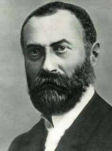
Ottó Bláthy
(born Aug. 11, 1860, Tata – died Sep. 26, 1939)
Father of the electric transformer, the tension regulator, the watt meter, the alternating current motor, the turbogenerator and high efficiency turbogenerator.
Even as a young pupil, Blathy excelled by his affinity to Mathematics, and his teacher often called him in front of his senior school-mates to solve the problems that they had not been able to cope with. From this small town of Tata, he went to the technical university of Vienna, where he received his engineer's degree in 1882.
Ottó Titusz Bláthy was not satisfied with theory only. He discovered the practical application of the connection between the magnetic field and the excitation creating it. This led to an improved design of DC engines. From the experiments he developed a science of then unforeseeable practical benefits. In 1884, he designed an automatic mercury voltage regulator for direct-current dynamos as his first patent. In the years to come, the generators of several current-generating plants in Italy were operated by this regulator. From 1884 on, on the basis of another patent of his, high-precision watt meters were produced. These were the first instruments with which the power of alternating current could be measured for any phase shift between voltage and current. Bláthy went to work to the Ganz Works in the summer of 1883, where experiments in connection with creating a transformer had already begun. He immediately joined the work, and as early as 1885, the alternating-current transformer, the revolutionary invention of the great triad was presented; power transmission even to great distances could be solved with it.
The new system was presented at the National Exhibition in Budapest in 1885. The entire area of the exhibition was illuminated by alternating current, distributed at 1,350 Volt primary voltage, of a frequency of 70 Hz, utilizing 1,067 incandescent lamps and 75 small shell-type transformers. It was an immense success. Bláthy soon departed from the lights of Pest, leaving for America, where he also visited the Edison Works. It was there that he observed that the parameters of the exciting coils of the machines to be produced were established on the basis of empirically set charts. Bláthy proved that these data can be arrived at by way of rigorous calculations as well, thus winning the admiration of the engineers at the factory. He did not stay in America for a long time. Work in the Ganz Works was awaiting him.
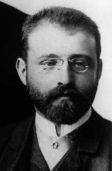
Miksa Déri
(born 1854, Bács, Hungary - 1938)
Developed A/C electric generator.
Born in Bács, Miksa Deri obtained his diploma in hydraulic engineering in 1877 at the Technical University of Vienna. Between 1878 and 1882 he was engaged in designing of the Duna and Tisza river control systems. At the same time he studied electrotechnics. In 1882 he started working at the Ganz factory as an engineer. Later on he became the factory's director, at a time when a remarkably talented professional team worked in the factory. Along with fellow Hungarian, Zipernowsky, they developed a self-excited AC (alternating current) generator during that year, which they began manufacturing in 1883. From 1833 Miksa Déri worked in Vienna as the Austrian representative of the Ganz factory electrical department.
In 1885 jointly with Ottó Bláthy and Károly Zipernowsky, they created the transformer. Déri performed the brunt of the experimental work. From 1889 he organized and equipped the electric power station in Vienna.
Between 1898 and 1902 he worked on his compensated DC machine. Two years later he designed the repulsion motor which was later named after him. Déri's repulsion motor filled up an important gap in equipping lifts, namely, no lift motor had worked safely until then. These brush-type motors were mass-produced and used all over the world.
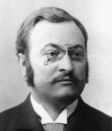
Károly Zipernowsky
(born 1853, Vienna - died 1942, Budapest)
A/C electronics pionee.! Founder of heavy-current electrical engineering.
Born in Vienna, he completed his studies in Budapest. During his Technical University years he gave many lectures on the subject of electronics. In 1878 András Mechwart, the Ganz factory's managing director entrusted him with organizing their electricity department. Since Ganz was the first factory in Hungary engaged in electricity, it thus became his task to develop the power industry in Hungary. Under Zipernowsky's leadership the factory soon became the pioneer in AC electronics. In 1883 the National Theatre of Budapest was fitted with lights by the Ganz company: this was the first alternating current, incandescent lighting system in Hungary (the third theatre in the world). It is worth mentioning that one of their AC generators, the "giant steam lighting machine", illuminated the Keleti Railway Station for thirty years.
In the 1880s scientists were often engaged in working on the distribution of electric light. Edison had solved the problem of carrying light economically to short distances with DC (direct current). Historical credit is due to Zipernowsky and his colleagues for developing the economical transmission and distribution of light to long distances. In 1889 he developed with Miksa Déri and Ottó Bláthy the transformer and the AC (alternate current ) energy distribution system based on transformers connected in parallel shunt. It should also be mentioned that AC or DC was not a settled question from the start. Edison, who backed DC, was proved wrong, the young Hungarian engineers were right. The state of the art electric equipment they produced was admired by the trade all over the world. (Western Electrician, Chicago, May 25th, 1889.)
In 1893 Zipernowsky acquired the position of lecturer in the department of power electronics at the Technical University, and became a corresponding member of the Hungarian Academy of Sciences. From 1905 he was active as the president of the Hungarian Electronic Association.
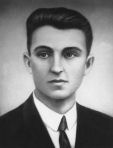
János Kabay
(Born Dec. 27, 1896 , Büdszentmihály - died Jan. 29, 1936, Budapest)
First to isolate morphine directly from the plant.
His patent, of worldwide significance, still serves up to the present day as the basis for the industrial process used throughout the world. By this process the opiate alkaloids are extracted from the dry capsules of the mature poppy (Papaver somniferum) plant (poppy straw). Kabay's breakthrough in 1928 produced a commercially feasible morphine extraction process.
During the Second World War, poppy straw processing began under German control as a source of opium during the Allied blockade. Since then, refinements to extraction techniques, and agricultural development have greatly increased yields, so that today more than 50 per cent of the world's legal annual morphine demand of about 230 tons is derived from this source which, in some countries such as Australia, is a highly mechanized agricultural procedure.
The government of Tasmania acknowledged his impact on Australian agriculture with a plaque located atVictoria Parade, Poppy Memorial, Devonport, 7310. The Inscription reads: "Janos Kabay. This plaque, erected by the Tasmanian Government, Poppy industry and growers, to commemorate the scientific achievements of Janos Kabay, the Hungarian pharmacist, was unveiled on 29 January, 1986, by the Hungarian Charge D`Affaires, A.I. in Australia, Mr Pal Ipper, to mark the 50th anniversary of Janos Kabay`s death. Janos Kabay invented and developed the process used to extract morphine directly for the poppy straw. The Tasmanian poppy industry is based on further developments of this process." Present at the unveiling were John Kabay and Ilona Oltvanyi, the son and daughter of Janos Kabay. There is also a statue of János Kabay at Tiszavasvári.
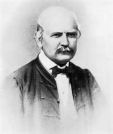
Ignác (Ignaz or Ignac) Fülöp Semmelweis
(born Jul. 1, 1818, Buda – Aug. 13, 1865, Vienna)
Physician - "The Mothers' Savior" - Discovered Cause of Puerperal Fever in 1847. Pioneer of antiseptic policy.
Made the first effective attack on bacteria, and discovered the cause of puerperal fever, which was killing thousands of mothers. Semmelweis insisted that doctors disenfect their hands before childbirth. Though the death rate fell from 12% to 1.5%, the Austrian doctors were offended by his suggestions (and the fact that he was a Hungarian in Vienna during the anti-Hapsburg revolution) and sent him back to Budapest. Ironically, he too, fell to puerperal fever due to an accidental infection. Semmelweis's practice earned widespread acceptance only years after his death, when Louis Pasteur confirmed the germ theory. In 1865, a nervous breakdown (or possibly Alzheimer's) landed him in an asylum, where Semmelweis died of "injuries," at age 47. The so-called Semmelweis reflex — a metaphor for a certain type of human behaviour characterized by reflex-like rejection of new knowledge because it contradicts entrenched norms, beliefs or paradigms — is named after Semmelweis, whose perfectly reasonable hand-washing suggestions were ridiculed and rejected by his contemporaries.

Dávid Schwartz
(born 1845 - died 1897)
The Hungarian inventor of the dirigible airship was not an engineer, not even a technician. He was a wood trader. Like many technically interested people in those years, he became increasingly fascinated by aviation, the great human adventure of the late 19th century. Schwartz studied the airship and came up with a novel idea. With the very thin aluminum he used for insulating the balloon, the aluminum skeleton, and the propellers at the sides of the basket, he set the course for the airship's future development. He submitted his design to the Austro-Hungarian Defense Ministry in Vienna, which classified the proposal as "inextricable" and discarded the idea. Schwartz invested all his money in further tests.
The Prussians recognized the significance of the invention (it used aluminum, the exciting new material) and financed the making of the new airship. The trial flight in October, 1895, did not succeed, because of the poor quality gas used for the filling of the balloon. Schwartz, who by now had become obsessed with his idea, began to look for the proper gas. The frustration and the ceaseless pursuit of additional funding, undermined Schwartz's health. He died on January 11, 1897.
The Prussian Defense Ministry continued tests with his airship. The first launch of the world's thus far largest capacity, 47.5 meter long, cigar-shaped airship weighting 3500 kg took place on November 3, 1897. The widow of Dávid Schwartz who lived in great poverty after his death sold all the patent rights to Graf Zeppelin for 15 thousand Deutschmarks....and two years later the first "Zeppelin" airship rose from Lake Constance... and 25 years later Captain Eckener crossed the Atlantic in 80 hours... Zeppelin had gained a brilliant victory, but the name of the man who conceived it technically has sunk into oblivion.
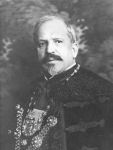
Donát Bánki
(born Jun. 6, 1859 – died Aug. 1, 1922)
Mechanical engineer and inventor. In 1893 he invented the carburetor for the stationary engine, together with János Csonka (known as the Bánki-Csonka engine). The invention is often, incorrectly credited to the German Wilhelm Maybach, who submitted his patent half a year after Bánki and Csonka. Bánki also greatly contributed to the design of compressors for combustion engines. He invented a water-turbine, as well, which is named after him. In 1898, Donát Bánki invented the high-compression engine with a dual carburetor, an evaporation method used ever since. The invention of the carburetor helped the development of automobiles, as previously no method was known to correctly mix the fuel and air for engines. Some sources say that the idea of the carburetor came from a flower girl. One evening, Bánki saw her while walking home from the Budapest Technical University. She was sprinkling water onto her flowers by blowing spray from her mouth. Bánki is also given partial credit for the invention of the Crossflow turbine.
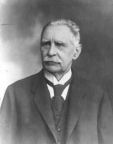
János Csonka
(born Szeged, 1852 - Budapest, 1939)
Until 1893, there had been many problems with the ignition of petrol engines due to uneven mixing of gases: the device, used to vaporize gasoline and mix it with the air, could not produce the precise mixing proportions. The carburetor (on the right) invented by Banki and Csonka immediately eliminated these problems. As so many times in technical history, the invention was conceived through a freak of fortune.
One evening, Banki walked home from the Technical University when he saw a flower-girl sprinkling water on her flowers with a mouth-blown spray. This sight led him to one of the most revolutionary ideas of engineering. Banki and Csonka suggested that the fuel should be atomized into small particles and mixed with air in the right proportion before feeding it into the combustion engine. In their patent description submitted on February 11, 1893, they wrote: "...in our engine no petrol pump is needed for fuel feeding, as the petrol necessary for filling each cylinder will be carried in by the air sucked into the engine..." This was the first carburetor in the world and ever since billions of engines, cars, power-boats, motor bicycles and aircraft over the world have used carburetors designed according to Banki's and Csonka's theory. Unfortunately, the credit for the invention of the carburetor is usually given to the German Maybach, although his patent was submitted half a year later. In 1898 Banki and Csonka split. Bánki focused his research on improving his other invention, water-injection engines.
Csonka (seen in his hand-made car on the right from 1909) concentrated on automobiles. In 1904, the Hungarian Post Office announced an international tender for the purchase of 8 mail vans. The tender was won by Csonka's original, four-cylinder car, which started its 8-day, 2000-kilometre trial run on May 31, 1905. This date is considered the birth of Hungarian automobile manufacturing.

Jenö Fejes
(born 1877 - died 1952)
Engineer, Inventor - first in the world who submitted patents for manufacturing automobile parts by cold-forming, pressing, torch or spot-welding.
Many Hungarian engineers and researchers played a significant role in the development of automobiles. One of them, Jeno Fejes, an unfairly forgotten designer, was the first in the world who submitted patents for manufacturing automobile parts by cold-forming, pressing, torch- or spot-welding. Soon after graduation, from 1902, Fejes was employed in the Westinghouse factory in France. The factory's car, designed by Fejes, won first prize at the Coup de la Presse race in 1907. From 1911 Fejes worked as constructor in the Mátyásföld plant of the Hungarian General Engineering Co.
He recognized that certain problems with the engines, stemming from casting difficulties or overweight, could be avoided if engines were constructed not using the cumbersome and unreliable casting techniques. The fast development of welding and pressing techniques helped to solve this problem. His first patent, "Extrusion of cylinder heads of combustion engines", was submitted on September 20, 1921. A year later this was followed by another patent application, "Vehicle chassis for automobiles and its manufacturing process."
Fejes replaced all cast and heavy pressed parts with cold-formed parts made of iron and steel plates. His other patents covered the manufacturing of the engine-house, the steering gear, the rear axle and the motor block. Cold forming allowed the use of steel plates of much smaller thickness than that of casts and thus the dead-weight of vehicles designed by Fejes was 30 to 35 percent lighter than cars manufactured using traditional methods. Another advantage of the plated engine was that on impacts, it dented and did not rupture as easily as cast engines. In 1922 Fejes established a company in Hungary to implement his patents and, in 1927, he set up "The Fejes Patents Syndicate Ltd." in England. After a successful pilot run, another company, Ascot Motor and Manufacturing Co. Ltd. was created with a founding capital of 400,000 pounds sterling. However, Austin, then a leader in the UK car market, was afraid of Ascot spoiling the market with its low-cost cars and used its influence as a share-holder in the company to thwart the launching of the series production. Fejes' inventions were ahead of their time: They were put into practice only from the 1970's.
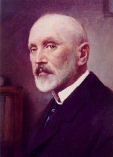
Baron Loránd Eötvös
(born Jul. 27, 1848 – died Apr. 8, 1919)
Mathematician - Developed the method and tool to measure gravity: His inventions made it possible to explore for natural resources like oil, coal, and different ores.
Scientific literature and usage bears ample evidence of his inventions: the Eötvös Law of Capillarity; the Eötvös Unit of Gravitation (roughly one-billionth of a gram); the Eötvös Gravitational Torsion Balance of almost incredible sensitivity; the Eötvös Effect: and inventions of instruments for measuring terrestrial magnetism for decades to come. The torsion balance made it possible to explore for natural resources like oil, coal, and different ores. Eötvös also recognized the correlation between surface tension and molecular weights of liquids measured at various temperatures. This led to the Law of Eötvös which was declared by Einstein to be one of the pillars of his theory of relativity and was applied in his "theory of equivalence."
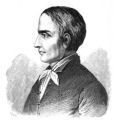
Sándor Kőrösi Csoma
(born Mar. 27, 1784, Koros, Transylvania – died Apr. 11, 1842, Darjeeling, India)
Explorer and Scholar "Father of Tibetan Studies and Buddhist Culture" Walked from Hungary to Tibet and presented the world with the first Tibetan dictionary and grammar and became a Buddhist Saint.
Awareness of the Hungarians' oriental origin never fell into oblivion, and questions regarding the history of the people and the language focused the attention of scholars toward Asia as a matter of course. First to set off toward the Orient was the legendary and world-famous Hungarian orientalist Alexander Csoma Korosi also known as Alexander Csoma de Koros. Born of a poor Szekely family, he began his studies as a servant and student at the college of Nagyenyed in Transylvania. From 1815, he pursued oriental linguistic studies at the University of Göttingen in Germany on an English scholarship. Here the determination matured in him to leave for Asia on foot and explore the ancient homeland of the Hungarians. He mastered the Turkish, Arabic, Persian and Bengali languages. During his travels starting in 1819 he reached India through Iran and Afghanistan. In Western Tibet, encouraged by the English traveller and scholar W. Moorcroft, his attention turned toward researching the Tibetan language.
In his first three visits to Tibet he spent more than five years in various monasteries conducting a monk-like existence. He was the one to discover that the holy scriptures of Buddhism had not been irretrievably lost, as had been thought earlier on, but were retained in Tibetan translation. He was the first to outline in 1836-39 the content of the 325-volume Tibetan Buddhist canon, Kandjur ('The translation of Buddha's tenets') and Tandjur ('Translations of Explanations') and the life of Buddha who had founded a religion. His articles promoted research into Buddhism, and Schopenhauer learned from his studies about Buddhism, which were to exert a decisive influence on him. After five years, he emerged with the world's first Tibetan dictionary (containing 40,000 words) and grammar book which were published in an English edition in 1843. Without any bias we can state that Alexander Csoma Korösi is a great founding father of not only Tibetan studies but that of Buddhist culture as well.
Tragically, on his fourth journey to Tibet, having at last obtained some information about the Yougar people (a race possibly related to the Magyars), he was fatally struck with malaria and died in Darjeeling without finishing his long search. Korosi-Csoma is buried in Darjeeling, his grave marked by a monument erected jointly in 1910 by the Hungarian Academy of Sciences, the Transylvanian village of Csomakőrös and the Asiatic Society of Bengal.
There can't be many Europeans whom Buddhists revere as a saint but the Hungarian Sándor Csoma Kőrösi is one. His grave, which lies at the foot of the Himalayas, is a place of pilgrimage. When the Dalai Lama visited Hungary he also spoke of Korosi as being a saint, and if anybody is qualified to make a pronouncement on this subject it is his Holiness. Today there stands a statue of Csoma de Koros at the Buddhist Unversity of Japan, where he sits in the lotus position, befitting the bodhisattva he had been declared in 1933.
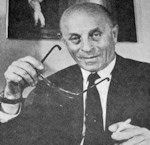
József László Bíró
Inventor. Developed the Ballpoint Pen AND the Automatic Gearbox for Automobiles.
The Ball Point Pen:
A journalist, magazine publisher, sculptor, and painter in Budapest, Laszlo Biro noticed, during a visit to a printer's, how quickly the printer's ink dried. It occurred to him that this fast-drying ink would work well in a fountain pen. This dense ink, however, would not flow through a pen. Therefore, Biro decided to replace the metal writing nib of his pen with a slim ball bearing. As the pen moved across the paper, the ball turned and suctioned ink from the reservoir, which then transferred it to the paper. The "Biro" was born.
Biro first patented the "ball point" pen in 1938. In 1940 he and his brother ran away from Hungary to Argentina where, in 1943, he patented his pen again and formed Biro Pens of Argentina (in fact, in Argentina the ball pen is known as birome seen here). A clerk of the British government, Henry Martin, who was, by chance, at that time in Argentina, was interested in the fact that Biro's pen wrote at any altitude above sea level, and therefore because it was not affected by air pressure or other atmospheric conditions, it immediately occurred to him to make it available to navigators in airplanes. The British government bought the patent and in 1944 a pen under the brand name Biro was produced for the Royal Air Force. Their successful performance for the Air Force brought the Biro pens into the limelight. Biro had neglected to get a U.S. patent for his pen and so even with the ending of World War II, another battle was just beginning.
The U.S. Department of State sent specifications to several American pen manufacturers asking them to develop a similar pen. In an attempt to corner the market, the Eberhard Faber Company paid the Biro brothers $500,000 for the rights to manufacture their ballpoint pen in the United States. Eberhard Faber later sold its rights to the Eversharp Company. The first great commercial success for the ballpoint pen came on an October morning in 1945 when a Crowd of over 5,000 people jammed the entrance of New York's Gimbel's Department Store. The day before, Gimbel's had taken out a full-page ad in the New York Times promoting the first sale of ballpoints in the United States. The ad described the new pen as a "fantastic... miraculous fountain pen ... guaranteed to write for two years without refilling!" On that first day of sales, Gimbel's sold out its entire stock of 10,000 pens-at $12.50 each!
The Automatic gearbox:
He bought a red Bugatti car one day, but found the clutch mechanism too clumsy and began to muse about an automatic solution. After one year of experiments, he made and patented his "automatic gear-box". For its mass production Bíró did not have enough capital and decided to sell the patent. The German subsidiary of General Motors requested him to introduce the patent in Berlin. To prove his invention's reliability, Bíró installed it on his own 350-CC combination motor bicycle, had its gear box sealed by the Automobile Club and with a passenger in the side car drove 1000 kilometres to Berlin, over hill and dale, without any fault. In Berlin he made four successful test drive. GM's draft contract offered him half percent of the price of each unit sold and a monthly USD 200 advance for five years. This latter secured him an easy life for a while, but the license fee was never paid, as, for commercial reasons, the American company suppressed the patent and sank it to the bottom of a filing cabinet.
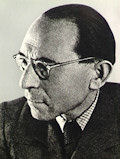
Paul Selényi
(born Nov. 17, 1884, Dunaadony - died Apr. 21, 1954, Budapest)
Physicist and Father of Electrostatics / Photoconductivity Pioneer - first to record images with an electrostatic marking process: the foundation of Carlson's Xerography.
Pál Selényi was one of the greatest and most versatile researchers of Hungarian experimental physics. He studied physics and mathematics at the Budapest University. After finishing his studies he started to work for the newly established Applied Physics Department of the University. In his early works he was engaged in studying the nature of light. Selényi was a physicist with great technological interest. He worked for various companies, e.g. for the development laboratory of the Tungsram Ltd. He published more than hundred articles in the field of optics, vacuum technology, photometry and electrography, studied and developed photocells, seleniumdiodes and photoelements. His pioneering work in electrostatic picture recording formed the basis of xerography. In fact Selényi published and patented several fundamental idea of electrography and produced better quality electrografic copies well before C. F. Carlson to whom the invention of electric recording is ascribed to.
Selenyi was the first to record images with an electrostatic marking process in which a modulated ion source was scanned over an insulating layer to form an electrostatic image that was subsequently developed with powder. Selenyi coined the term "electrography" for his electrostatic imaging processed he invented in the 1920's. Carlson's invention was heavily influenced by the earlier work of Paul Selenyi. Carlson's insight was to use a photoconductive material to produce an electrostatic image that is then developed with charged, pigmented powder. Carlson built a prototype of a copying machine, but was unsuccessful in attracting the interest of large corporations. In 1944, Battelle Memorial Institute in Columbus, Ohio began work on the process where key advances were made in materials and processes. This led to the introduction of the highly successful Xerox 914 plain paper copier in 1959.
Zworykin, television pioneer, wrote:
"I recollect with great pleasure my visit during the next few days to the Tungsram Laboratories. It was surprising to me to find in a country as small as Hungary such a well-equipped laboratory and so much advanced work in electronics. One of the laboratories which impressed me particularly was that of Dr. Selenyi, who showed me a method of storing the image on used movie film by electrostatic charging with an electron beam transmitted by a thin-glass window on a cathode-ray tube. He was hoping to use this method for a large-screen television projection picture. As far as I know, he was not able to translate this idea into practice. However, the idea itself survived and many years later was used in modern copying machines." (p. 105 from Chapter 8 - Pre-War World-Wide Television Effort, Zworykin’s European Travels 1935-1939)

Egon Orowan (Orován)
(born Aug. 2, 1901, Budapest - died Aug. 3, 1989, Cambridge, MA)
Applied Physicist.
Applied physics reached world standards in northern Budapest, where the Tungsram Company was created (1896). The name of this light bulb factory originates from tungsten (wolfram), the best resistant metal which was patented by Sándor Just and Ferenc Hanaman (1903), as the glowing fiber in light bulbs, instead of Edison's fragile carbon fibers. Tungsten (and Tungsram) made electric incandescent lamps long-lasting, so that the light bulb could become an everyday item. With Michael Polányi he was responsible for the introduction of the crystal dislocation into physics as the essential mediator of plastic deformation. The Tungsram employees Dennis Gabor, Egon Orowan, and Michael Polányi later became fellows of the Royal Society.
Though he occasionally spoke at meetings concerned with science and technology policy, and wrote letters to the press on a number of topics, he was an essentially private person and left no biographical notes. A letter from Professor László Bartha, Director of the Research Institute for Technical Physics of the Hungarian Academy of Sciences, says that Orowan worked with the Tungsram Research Laboratory between 1936-1939, under the supervision of Dr. Imre Bródy. According to this letter, Bródy invented the krypton-filled light bulb. With the help of Mihály (Michael) Polanyi, he developed a new process for extracting krypton from air. Bartha’s letter says that “Orowan was the person, who helped him to verify the large scale separation of krypton from air by fractioned distillation of liquid air. He played an important role at the installation of a pilot plant for krypton manufacturing in a small town—Ajka—about 80 miles from Budapest.
While working on plasticity and fractures in solids, Orowan studied high resolution photographs brought back by the Apollo missions and proved that the craters on the Moon are not products of lunar volcanism but had been created by impacts of meteors from outside. He died in the Mount Auburn Hospital in Cambridge, Massachusetts, on 3 August 1989, a day after his 87th birthday. He is buried in the Mount Auburn Cemetery.
M.I.T. has an award named The Egon Orowan Award for Outstanding Teaching.
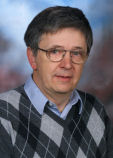
Laszlo Lovasz
(born Mar. 9, 1948, Budapest)
Renowned Yale University Senior Faculty Mathematician, Microsoft Senior Researcher, Computer Scientist: 1999 Wolf Prize Winner.
Lászlo Lovász is a renowned leader in the field of discrete mathematics, an area quickly becoming one of the most important areas of mathematical research, with applications to cryptography, linear programming, coding theory and the theory of computing. Dr. Lovász received his Ph.D. from the prestigious Eötvös Loránd University in Budapest in 1970. Within a 5 years, he held the Chair of Geometry at the University of Szeged from 1975-1982. In 1983 he was back to his alma mater, this time as Chair of Computer Science at the Eotvos Lorand University, a post he held for 10 years until 1993 when he joined Yale faculty.
His awards include the George Polya Prize of the Society for Industrial and Applied Mathematics (1979), the Ray D. Fulkerson Prize of the American Mathematical Society and the Mathematical Programming Society (1982) and the Brouwer Medal of the Dutch Mathematical Society (1993). He is a recipient of the 1999 Wolf Prize and the Godel Prize for the top paper in Computer Science.
He is editor-in-chief of Combinatorica and editor of 12 other Journals. He has written 4 research monographs and 3 textbooks, and about 200 research papers. Some of his major works include: Combinatorial Problems and Exercises (1979), Matching Theory (M. D. Plummerrel, 1986), An Algorithmic Theory of Numbers, Graphs and Convexity (1987), Geometric Algorithms and Combinatorial Optimization (M. Grötschellel, A. Schvijverrel, 1988). He is a member of the Hungarian Academy of Sciences and three other Academies.
He is also a Senior Researcher in the Theory Group at Microsoft Corporation. He is married with 4 children.
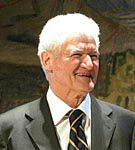
Peter Lax
(born May 1, 1926, Budapest)
Renowned and Prolific Applied Mathematician and "one of the greatest figures in pure and applied mathematics of our times." 1987 Wolf Prize Winner
Peter Lax is one of the greatest figures in pure and applied mathematics of our times. His work has been seminal and extraordinarily influential in almost all areas of mathematics and its applications where differential equations are involved, such as integrable systems, fluid dynamics and shock waves, solitonic physics, hyperbolic conservation laws, and so on. His contributions to mathematical and scientific computing are very significant.
In 1970, Professor Lax risked life and limb to help prevent a bomb from destroying the NYU computer center. In August 2000, he will be one of about 30 plenary speakers at the AMS meeting in Los Angeles, Mathematical Challenges of the 21st Century. Professor Lax's work has been recognized by many honors and awards. He is a member of the National Academy of Sciences, USA. He was awarded the National Medal of Science in 1986, shared the Wolf Prize in 1987, the Chauvenet Prize for Mathematics, and shared the American Mathematical Society's Steele Prize in 1992.
He is a past president of the American Mathematical Society, and a former Director of the Courant Institute, and past member of the National Science Board. He worked on the Manhattan Project with many of his fellow Hungarians, is a member of the Los Alamos Lab, and chaired the committee convened by the National Science Board to study Large Scale Computing in Science & Mathematics, a pioneering effort (well-known as the Lax Report). Professor Lax continues to be a leading and innovative force in mathematics and a tireless reformer of mathematics education. He is Professor Emeritus of Mathematics at New York University's Courant Institute.

Csaba Horváth
(born Jan. 25, 1930, Szolnok, Hungary - died Apr. 13, 2004, New Haven, Connecticut)
Renowned Professor of Chemical Engineering at Yale. Father of high-pressure liquid chromatography (HPLC).
The American Chemical Society lists Prof. Csaba Horváth among greats like Crick and Watson, Linus Pauling, Pierre and Marie Curie, and Ernest Rutherford, individuals who have contributed most to the development of chemistry in the 20th century. Csaba Horváth, along with J. Calvin Giddings and J.F.K. Huber, had come up with the concept of the first HPLC instruments.
In the mid-1960s, Horváth became the first scientist to design, construct, and demonstrate molecular separations using high-pressure liquid chromatography (HPLC), which has become a multi-billion-dollar business. The technique made possible quantitative analysis of complex biological mixtures and allowed advances in the areas of biomedicine, pharmacology, and biotechnology.
Born in Szolnok, Hungary, Horváth graduated with a chemical engineering degree from the Technical University in Budapest in 1952. Because of Soviet repression, he immigrated to Germany in 1956 and joined Farbwerke Hoechst AG in Frankfurt am Main, where he performed research and development work on the surface chemistry of organic dyes. In 1961, Horváth left industry to attend Johann Wolfgang Goethe University, where he earned a Ph.D. in physical chemistry (magna cum laude) in 1963. In February 2004, Prof. Csaba Horváth was elected to the National Academy of Engineering "For pioneering the concept and the reduction to practice of high-pressure liquid chromatography (HPLC) and for leadership in the development of bioanalytical techniques."
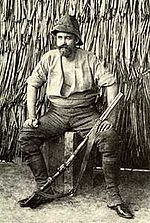
Count Samuel Teleki
(born Nov. 1, 1845 – died Mar. 10, 1916)
Explorer. Led the famous East-Africa Expedition.
In 1886, the Hungarian count Samuel Teleki von Szék, "a jovial Hungarian aristocrat of immense wealth," accepted a suggestion from his friend and benefactor, prince Rudolf, son of the Austro-Hungarian emperor Franz Josef I, to turn the safari he was planning into a journey of exploration of the territories north of Lake Baringo, beyond where Thomson had set foot. And so he did. Accompanied by lieutenant Ludwig von Höhnel (1856-1942), Teleki set on his way, being the first to climb Mount Kenya to later head on northwards and discover in 1888 the last of the Great Lakes, which he named after his friend the prince, and which we know today by the name of the tribe that inhabits its shores, Turkana. Teleki's and von Höhnel's journey also unveiled a smaller lake, Stefanie, south of Ethiopia, re-named later as Chew Bahir.
Lake Turkana, a 2,500 square mile stretch of water, is alkaline, barely drinkable, and capricious. Sometimes it is calm and unruffled, often it is turbulent with an impression of malevolence, from a distance however it always stretches away peacefully and it's shimmering surface sometimes takes on the colour of Jade, and thus was aptly named the Jade Sea by Count Teleki in 1888. Strong winds blow constantly, temperatures soar well above 100F, and movements in the earth's surface are continually throwing up exposed sedimentary layers, many of which have preserved pre-historic fossils in a remarkably good state.
Count Teleki's father, also Samuel (b. Gernyeszeg, 1739, d. Vienna, 1822), was Lord Chancellor of Transylvania at the end of 18th century. He founded the Teleki library in Marosvásárhely, (renamed Tirgu Mures after Rumanian annexation in 1920) which holds more than 200,000 priceless volumes 40,000 of which from his personal collection. This "Bibliotheca Telekiana,"one of the first Hungarian public libraries, opened in 1802.
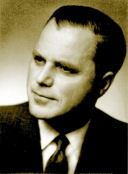
Béla Barényi
(born 1907, Hirtenberg, Austria - died 1997, Sindelfingen, Germany)
Engineer, Auto Safety Pioneer. Father of the Volkswagen Beetle, Passive Safety, Occupant Safety Cell, Collapsible Steering System, AND the Seat Belt.
Bela Barenyi completed his studies at the Technikum in Vienna. His father was an Colonel in the Austro-Hungarian Military and his mother from one of the wealthiest Austrian families. When Pozsony became part of the new "Czechslovakia" in 1920, his family took Czechoslovak citizenship. In 1925, he designed the famous Famous HungariansFamous HungariansVolkswagen Beetle. Because Porsche was later credited with the invention (1938), Berényi took legal action in 1955. The German Courts and the State Patent Office in Mannheim acknowledged that Barényi had invented the concept and the main components of the Volkswagen. Barényi only asked for 1DM (one German Mark) as compensation.
From 1939 to 1974 he worked for Daimler-Benz, heading the strategic planning department for a significant period. Several of his inventions were decades ahead of their time. Passive safety was one of these ideas. Out of his 2500 inventions for the automobile industry, dividing cars into three collision zones was the most significant one (1951). The rigid passenger cell is enclosed by deformable front and rear ends (crumple zones) which absorb the impact of collision. In order to mass-produce his design he had to replace the rigid undercarriage with a floor plate, patented in 1943. Since 1959, Daimler Benz (and today every automobile company in the world) manufactures cars - acknowledged for their safety worldwide - based on Barényi's design. Crash tests are also associated with his name.
Bela Barenyi retired in 1974. Barényi's inventions completely changed the world's automobile production. In recognition of his achievements he was admitted to the Automotive Hall of Fame in 1994, the single greatest honor in the motor vehicle industry. His ideas saved the lives of millions.
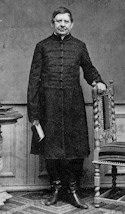
Ányos Jedlik
(born Jan. 11, 1800, Zenne - died Dec. 13, 1895, Gyor)
Benedictine Priest, Engineer, Physicist, Inventor. Father of the Dynamo and Electric Motor.
Though he preceded his contemporaries in his scientific work, he did not speak about his most important invention, his prototype dynamo, until 1856; it was not until 1861 that he mentioned it in writing in list of inventory of the university. Although that document might serve as a proof of Jedlik's status as the originator, the invention of the dynamo is linked to Siemens' name because Jedlik's invention did not rise to notice at that time.
Jedlik's education began at Nagyszombat and Pozsony (Bratislava today after Slovak annexation) high schools. In 1817 he became a Benedictine and from that time continued his studies at the schools of that order. In 1827 he started experimenting with electromagnetic rotating devices which he called "lightning-magnetic self-rotor" (approximate translation). In 1829 he constructed the first rotating machine based on the electromagnetic impulse, which was the predecessor of the DC motor.
He lectured at Benedictine schools up to 1839, then for 40 years at the Budapest University of Sciences department of physics-mechanics. In 1845 he began teaching his pupils in Hungarian in lieu of Latin. Through his textbook he is regarded as one of the establishers of Hungarian vocabulary in physics. He became the dean of the faculty of arts in 1848, and by 1863 he was rector of the University. From 1858 he was a corresponding member of the Hungarian Academy of Sciences and from 1873 an honorary member.
In the 1850s he conducted optical and wave mechanical experiments, and at the beginning of the 1860s he constructed an excellent optical grate. Ányos Jedlik's best known invention is the principle of self-excitement. His journal records in 1859 that he discovered the principle of self-ignition and the fact that a remnant magnetic force in the core was sufficient for starting the process. In 1861 he constructed a "single-pole electric starter", which exploited the principle of self-ignition. His machine was a unipolar generator with no brushes. With the single pole electric starter, he formulated the concept of the dynamo (seen here) at least 6 years prior to Siemens and Wheatstone. Jedlik also recognized that when electricity was connected to the device, it became an electric motor. In 1863 he discovered the possibility of voltage multiplication and demonstrated it with a "tubular voltage generator" (1868), which was successfully displayed at the 1873 Exhibition in Vienna.
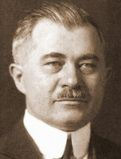
Joseph Galamb
(born. Feb 3, 1881, Mako - died Dec 4, 1955, Detroit, Michigan
Ford Chief Engineer. Designed the Model T and Model A Ford, the Fordson Tractor, invented the Ignition Plug and the Planetary Gearbox, and prepared the production of Liberty aircraft engines.
One of the most talented technical forebears in American automotive industry, József Galamb had a very eventful career. He was born in the small Hungarian town of Makó in 1881. After graduating at the Budapest Technical University, he started to work in a wagon factory and later joined the biggest Hungarian automobile factory in Arad, Transylvania (now Oradea, Rumania after annexation in 1920). At the beginning of the 1900s he studied manufacturing processes in the German Adler car factory, finally in 1903 crossed the Atlantic and tried his luck in the United States. He turned up in several cities including St. Louis, Cleveland, and Detroit. He began to work with Ford in December 1905.
Preliminary design works lasted six months. When Ford approved a part, it was immediately made of wood and thus, the new Model T slowly took shape. Its most important part was the planetary gearbox, one of Galamb's most brilliant inventions. The Model T designed by Galamb was ready by 1908 and 19 thousand cars were sold the next year. By adjusting the line, output was increased and unit costs reduced. By 1915, production reached 1 million units and by 1927, when the production of the Model T stopped, a total of 15 million had left the factory. József Galamb also designed the world-famous Fordson tractor and the ignition plug. During World War I, he designed ambulance vans and light tanks, prepared the production of Liberty aircraft engines. In 1927, he designed the modern and more elegant Model A to replace the now old-Model T. In 1937 he was appointed as chief constructor at Ford, and he kept this position until his retirement in 1944.
His daughter, Gloria Galamb Albinak wrote to me saying: "...to my surprise and pleasure I saw where you have my father, Joseph Galamb, listed as a famous Hungarian! Perhaps you would like to add his dates: 1881-1955 and the fact that he was at Ford Motor from 1906 to 1945, when he retired. He was Chief Engineer there, cut his teeth on the Model T and designed all Ford cars, tractors and airplanes until his health forced his leaving. He was a graduate of the Technicon, served in the Austro-Hungarian Navy stationed at Pola, came to the USA to attend the St. Louis World`s Fair in 1903 and stayed."

Sir Aurel Stein
(born Nov. 26, 1862, Budapest - died Oct. 26, 1943, Kabul, Afganistan)
"The most prodigious combination of scholar, explorer, archaeologist and geographer of his generation." The "Sven Hedin of England." Pioneered the use of aerial photography in archaeology.
After receiving his education in Budapest, Dresden and Vienna he moved to Tübingen and later to England where he devoted himself to Asiatic studies. In London he did intensive research into the languages, the history and the antiquities of Asian countries. In 1888 he was professor of Sanskrit language and literature at the Punjab University in Lahore. After doing archeological explorations in India and Kashmir, Stein crossed the Himalayas in 1900 to excavate the ancient ruins in the deserts of Chinese Turkestan. During his second expedition there (1906-1908) he explored the region of Lop Nor, traced the Great Wall of China, and opened up the Church of the Cave of the Thousand Buddhas, which had been brought to his attention by Lajos Lóczy (above).
Stein won world fame through the expeditions he ran to Eastern Turkestan, Afghanistan and Iran. He pioneered not the Silk Road itself but its recovery for historical memory, as well as the recovery of the cultures which had flourished along its route and then passed into dry, sandy silence. He recovered and published the text of what is almost the only native history of India from before the Muslim invasions; conducted some of the first archaeological surveys of Iran and Iraq; pioneered, in his sixties, the use of aerial photography in archaeology. A large part of the materials collected during his exploratory trips was transferred to London, and another part is on display as a separate collection at the Delhi National Museum. He held the post of general director at the Indian Archaeological Directorate from 1910. He bequeathed his valuable library, manuscripts, letters and collection of photos to the Hungarian Academy of Sciences.
Aurel Stein was one of the few honorary members of the British Geographical Society. Stein met his death while traveling in Kabul, Afghanistan.
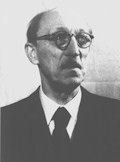
Dr. Albert Fonó
(born Jul. 2, 1881, Budapest - died Nov. 21, 1972, Budapest)
Mechanical Engineer. Inventor of the Ramjet enabling aircraft to fly faster than the speed of sound. Developed Torpedos, Jet Artillery, Air Compressors.
The Budapest-born mechanical engineer received his diploma in 1903 at the Budapest Technical University. His main professional interest was energetics, though his theoretical work was extensive. After gaining experience at German, Belgian, Swiss and French factories, he obtained his degree of Ph.D. in the technical field. His first invention was an aerial torpedo in 1915, which operated on the jet propulsion principle. This invention increased the effective range of artillery. It was a significant invention but failed to attract interest. On the other hand, inventions which were more in accord with the technical level of his age became successful. He patented a new steam boiler in 1923 and an air compressor for mines in 1928.
After World War I, Fonó returned to the subject of jet propulsion. In May 1928 he described a "air-jet engine" (now called a ramjet) which he described as being suitable for high-altitude supersonic aircraft, in a German patent application. In an additional patent application he adapted the engine for subsonic speed. The patent was finally granted in 1932 after four years of examination. With this advanced invention Fonó proved himself ahead of his time. From 1954 he was a corresponding member of the Hungarian Academy of Sciences. He received the Kossuth Prize in 1956 and from 1968 he was a corresponding member of the International Academy of Astronautics.
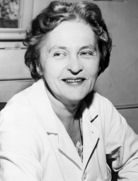
Mária Telkes
(born Dec. 12, 1900, Budapest - died Dec 2, 1995)
Chemist, Engineer. Developed first thermoelectric power generator and the first thermoelectric refrigerator. A Pioneer of Solar Energy: "Mother of the Solar Home," The "Sun Queen," and "world's most famous woman inventor in solar energy."
Telkes is known for creating the first thermoelectric power generator in 1947 and the first thermoelectric refrigerator in 1953 using the principles of semiconductor thermoelectricity. Maria Telkes first became interested in the problems of solar power as a high-school student. She came to the United States in 1925 with a Ph.D. in physical chemistry from the University of Budapest. After working for twelve years at the Cleveland Clinic as a biophysicist, she went to the research laboratories of Westinghouse Electric Corporation. Between 1939 and 1953 she was at the Massachusetts Institute of Technology as a research associate in metallurgy. It was at MIT that she became known for her research in solar energy. The first experimental house using solar heating was built under her supervision in 1948.
During World War II she served as civilian advisor to the Office of Scientific Research and Development, devoting her efforts to the design of a distilling system using solar heat to convert sea water into drinking water. In 1945, Dr. Telkes received a certificate from OSRD for her development of a portable solar distiller for life rafts. In 1953 she became project director at the College of Engineering, NYU, and then research director of the Solar Energy Laboratory, Curtiss-Wright Corporation. She was featured in Life Magazine for her work synthesizing chemicals used in Polaris missiles.
She designed two more dwellings that harness solar energy and obtained approximately 20 patents (distillation equipment, portable desalination of seawater on life rafts, heat storage, cold storage). She designed, built, and tested solar thermoelectric generators for terrestrial and space uses. She realized that fuel conservation was needed for 20th-century cook stoves so she decided to turn to a solar again and designed one of her well-known inventions: the solar oven. The Ford Foundation issued a $45,000 grant to Dr. Telkes to continue the development of her solar oven. This grant allowed her to give it many more capabilities: her solar ovens are designed to be used to create any tribal or national cuisine, can by used safely by children, will not scorch foods, and free the cook from constant stirring. In 1973, public interest in solar energy grew after the oil shock. This led to the construction (a joint effort of MIT and the Department of Energy) of the Carlisle solar house in Carlisle , Massachusetts, in 1980. Her solar-energy inventions even led to the development of a faster way to dry crops.
She received the first Achievement award ever given by the Society of Women Engineers in 1952 during her tenure at MIT in recognition of her meritorious contributions to the utilization of solar energy. In addition, Dr. Telkes became known as one of the pioneers of solar energy usage when she received the Charles Greeley Abbot Award (which is awarded by the American Solar Energy Society) in 1977.
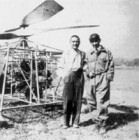
Oscar Asbóth
(born Mar. 31, 1891 in Pankota - died Feb. 27, 1960. Budapest)
Engineer. Student of Theodore Kármán and Helicopter Pioneer.
In the first decades of modern aviation history, airplane designers seeking for new flying techniques probed many different solutions; along with the rigid-wing "dra-gon" or the orni-thopter, they also experimented with propellers rotating around a vertical shaft. During World War I, Lieutenant-colonel István Petróczy, professor Tódor Kármán and Vilmos Zurovetz jointly made hovering experiments with a windmill plane. At some of these Oszkár Asbóth then only 27 years old, also participated.
He finished his studies at Arad, Transylvania (today Oradea in Rumania after annexation following the Treaty of Trianon) and became a member of a motor sport club as a teenager. He was only 18 when he built his first glider pulled up into the air by a motorcycle. Soon he designed an engine-driven plane and a stabilizer which was among the prize-winners at a competition organized by the Austro-Hungarian Defense Ministry. After the outbreak of World War I, he did military service at an aircraft factory near Vienna where he was in charge of propeller manufacturing. Asbóth constructed and tested some 1500 propellers in the wind channel of the factory. Ten years later Asbóth built his first helicopter. Powered by a 120 HP nine-cylinder engine and propelled by two wooden propellers, each 4.35 meter in diameter, placed parallel above each other and rotating in opposite direction, the model "AH 1" took off vertically on September 9, 1928. Tires were replaced by four footballs to provide sufficient flexibility for landing. For its maiden flight, after 1100 rotations the plane swiftly took off, at ten meters stopped, hovered for some ten minutes, than smoothly descended.
A director of the research department of the British Air Ministry R. N. Liptrot, who also traveled on the helicopter, wrote in the British Journal of the Aeronautical Society in 1931: "the Asboth-helicopter ascends vertically with a remarkable speed...to any height where it can hover stationary for some time. It can be perfectly navigated. But the most remarkable is that, unlike other tested helicopters, this one remains absolutely stable around all axes..."
Asbóth's merits were much more recognized in foreign countries than in his homeland. In 1954, on the 25th anniversary of the maiden flight of his first helicopter, the Fédération Aeronautique Internationale (Paris) awarded Oszkár Asbóth with the Paul Tissandier diploma for his lifetime achievements in aeronautics.

Zoltán Bay
(born Jul 24, Gyula - died Oct. 4, 1992, Washington, DC)
Physicist. First to use radar to take measurements of the moon, developed the Light Meter.
Following his attendance at the Presbyterian Boarding-school in Debrecen, he continued his studies at the Pázmány Péter Academy of Sciences where he obtained his Ph.D. Following a four-year study tour in Berlin, from 1930 he worked at the University of Szeged as a professor of theoretical physics. He developed his radar in 1936 at the laboratory at Tungsram. As the head of the laboratory, he developed several patents in the field of high voltage gas discharge tubes, fluorescent and vacuum tubes. He lectured between 1938 and 1948 at the Budapest Technical University. He developed radar for air defense in Budapest during World War II, independently of British and German efforts. With his research team in 1946 he observed the reflection of radar beams aimed at the moon, which was considered revolutionary in space research at that time.
He was forced to leave Hungary, and between 1948 and 1955 he worked as a professor of experimental physics at the George Washington University where he was engaged in ionization experiments and light speed measurements, developing the definition of the“light meter.” On the basis thereof his new definition of the meter was accepted by the International Weights and Standards Institute in 1983. From 1955 to 1972 he was a departmental head at the U.S. Bureau of Standards. Subsequently he became a professor at the American University. In 1981 the Hungarian Academy of Sciences and the Eötvös Loránd Society of Physics elected Bay honorary member. He achieved considerable success in the physics of active gases, and worked out the method of fast atom counting, operating on the principle of secondary electron multiplying. He justified by experiment that the universal system of measuring time and length based on the speed of light was in fact valid, thus proving Einstein's idea of space-time.
On his 90th birthday he was decorated with the The Order of the Hungarian Republic adorned with rubies. He passed away in Washington on October 4th, 1992. According to his last will, his ashes returned to his native country.
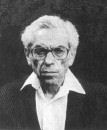
Paul Erdôs
(born Mar. 26, 1913, Budapest - died Sep. 20, 1996, Warsaw, Poland)
Legendary Mathematician. "The Greatest Mathematician of the 20th Century."
"When one reads of Paul Erdös, two words invariably come up: prolific and eccentric. While "above average" mathematicians publish some 20 articles in a lifetime, Erdös wrote over 1500 papers, books, and articles, more than any mathematician in history. To say that he was prolific, which means productive, is a fair description. The March 29, 1999 edition of Time magazine, Michael D. Lemonick writes "In a profession with no shortage of oddballs, he was the strangest. Erdös had no home, no possessions, and no life aside from mathematics." The statements are true, so eccentric is probably a fair description of Paul Erdös as well. Despite his peculiarities, Paul Erdös was arguably one of the greatest mathematicians of the twentieth century. He is credited with 'one of the greatest mathematical discoveries of the twentieth century...the simple equation that two heads are better than one.'"
Revered by colleagues and considered to be the "most brilliant mind in his field," he collaborated with so many mathematicians that the phenomenon of the "Erdos Number" evolved. To have an Erdos number 1, a mathematician must have published a paper with Erdos. To have a number of 2, he or she must have published with someone who had published with Erdos, and so on. Four and a half thousand mathematicians have an Erdos number of 2. Erdös has been referred to as the Johnny Appleseed of Mathematics. In his final years, Erdös had become more forgetful and somewhat slower, but he continued to travel the world, spreading his love of mathematics as Johnny spread seeds. According to Erdös, to "die" was to quit doing mathematics. To "leave" was physical death. In Warsaw, Poland for a combinatorics meeting, Erdös "left" at the age of 83, of a heart attack.
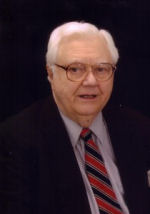
Geza Jako
(born 1930, Budapest)
Physician, scientist, educator. Father of soft tissue microsurgery, laser surgery, minimally invasive surgery. White House Advisor for Cancer to Presidents Reagan and Bush Sr. Pioneer of human cochlear stimulation for deafness. Member of the American Hungarian Federation.
Geza Julius Jako (Szalardi- von Jako), White House Advisor for Cancer to Presidents Reagan and Bush Sr. Inventor of soft tissue microsurgery, laser surgery, minimally invasive surgery. Pioneer of human cochlear stimulation for deafness. Physician, scientist, educator." A 1956 Freedom Fighter remembered for his role in establishing emergency medical services in Budapest at the start of the ill-fated Hungarian Revolution, he went on to become a Professor of Head and Neck Surgery at Boston Univ and to receive staff appointments from Harvard Medical School, MIT, and North Eastern University for Biomedical Engineering. In addition, he has had four Presidential White House appointments (among them 8 years with President Reagan) and served at the highest levels of the National Institutes of Health (NIH).
Dr. Jako (pronounced yuh-ko) has hundreds of peer reviewed journal articles, books and chapters in surgery. His students have gone on top be some of the top ENT surgeons in the world. He holds several patents and the only patents on Lasers in medicine and endo-micro instruments. His first lasers are displayed in museums in Washington D.C. and in the Hungarian National Museum in Budapest in the section of Hungary's most significant scientists featuring Edward Teller, Albert Szentgyorgyi, and many others. His instruments and surgical techniques have become the "gold-standard' for head and neck surgery worldwide and in the fight against laryngeal cancer that today has saved hundreds of thousands of voice boxes. He was forced to flee to the West as a graduate medical student and today has a few historic commemorative plaque and tablets to his contributions during the '56 revolution at the significant sites during the battles. One of these shown here is at the hospital that became a focal point of the revolution and mentioned in several papers and film documentaries for 1956.
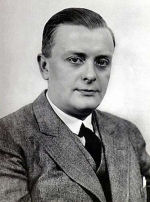
Mihály Dénes
(born Jul 7, 1894, Godollo - died Aug. 29, 1953, Berlin, Germany
Mechanical Engineer. Father of Sound Film and Television Broadcasting: Produced the first television program in history.
Mihaly Denes graduated from Vörösmarty Mihály High School (Gimnázium) and received his degree in Mechanical Engineering from the Technical University in Budapest. He is listed among the world's leading scientists in the field of electronic image transmission. On 7 June 1916, he managed to produce a successful movie with a sound track. On 30 April 1918, he applied for a patent for a method called Projectophon for recording sound pictures. His method provided good quality sound tracks with 35 mm film stock using optical sound recording, and he can thus be regarded as the inventor of the sound film. His patent was published on 18 October 1922.
He was also engaged in early experiments in television from the 1910s. He initially developed his inventions at the Telephone Factory in Budapest, before going to Berlin in 1924, to work for AEG. His first practical piece of equipment, the Telehor, was introduced in 1928. On 8 March 1929 the Berlin-Witzleben radio station transmitted the first live television broadcast in the world, using his system.
Under Hitler's rule, he was sent to a concentration camp for hiding the persecuted. In 1953, he died from tuberculosis he acquired there.
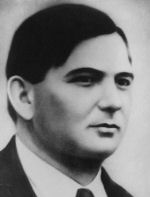
Imre Bródy
(born 1891, Gyula - died Dec. 20, 1944, Mühldorf, Germany)
Physicist. Father of the Krypton Electric Bulb.
Brody was university educated in Budapest and became a physicist. He wrote his doctoral dissertation on the chemical constant of monoatomic gases. First he taught high school, then he became an assistant professor in the department of applied physics at the University of Sciences. Early in his career he accomplished valuable theoretical work investigating specific heat and molecular heat. For a short period beginning in 1920 he worked with Max Born as assistant to the professor in Göttingen. They jointly worked out the dynamic theory of crystals.
He returned home in 1923 and worked at Tungsram as an engineer until the end of his life. His most important invention dates from 1930. Late in the last century, scientists engaged in the radiation theory of incandescent bodies had already proved that an incandescent body radiates its energy mostly in the form of heat, and only a small part as light.
Brody put his finger on the most important problems of incandescent lamp production. According to his hypothesis, the exit of evaporating tungsten atoms from the incandescent filament through the medium of gas was regulated not by diffusion only, as it was assumed, but was also influenced by other laws of nature. To eliminate such problems, he used gas of great molecular weight (He filled lamps with krypton gas in lieu of argon), thus attaining a longer life for the lamp. He chose the length and diameter of the incandescent wire in such a way that the filament's glowing heat be increased without reducing the lamp's life span. By using krypton gas, he developed an up-to-date lamp with longer life and better performance.He also developed a new process to ascertain the krypton content of air. At the cost of a few years' work he demonstrated that krypton gas could be mass-produced at a cheap rate. Advantage of the krypton lamp was to emit more light without increased energy consumption. Its display at the Budapest Industrial Fair in 1936 was a technical sensation.
Production of krypton filled lamps based on his invention started at Ajka in 1937. Subsequently Bródy worked on new light source problems. He remained with his family after the German occupation of Hungary in 1944, and despite of the immunity the factory provided for him, he succumbed to certain death. He died on December 20, 1944 in Mühldorf as a victim of fascism.

Thomas A. Sebeok (Sebők)
(born 1921, Budapest - died Dec. 21, 2002, Bloomington, Indiana)
Father of Modern Semiotics (the study of signs and non-verbal communication.)
A pioneer in the science of signs and symbols, he was noted for challenging the theory that apes and chimpanzees could learn language to communicate with humans. Dr. Sebeok, a professor emeritus at Indiana University, published more than 60 books in his field, known as semiotics, including the classic "Speaking of Apes" (1979), which he edited with his wife. He argued that apes could not learn language because they lacked the body parts for language, like a larynx or vocal cords, and that they were unable to pass language on to their offspring." Dr. Sebeok showed that nonhuman animals need both the anatomy and nature for learning language," said Dr. Marcel Danesi, a professor of semiotics at the University of Toronto, who has also written extensively in the field. "His work demonstrated that if language were a genetic endowment in apes, then we could just teach them and they would pass it on." When Dr. Sebeok began his career, his field was limited to the study of language. But with the publication of his "Approaches to Semiotics" (1964), he revolutionized that field, expanding it beyond human language to nonverbal communication in all organisms.
In 1981, the Nuclear Regulatory Commission turned to Dr. Sebeok for help in developing "keep away" signs that could be understood by people in 10,000 years, the duration that nuclear waste may be dangerous to humans. Dr. Sebeok suggested signs with words, pictures, cartoons and stick figures to indicate danger. The signs, he said, should also include a "veiled threat that to ignore the mandate would be to invite some sort of supernatural retribution." Thomas Albert Sebeok was born in Budapest but left to study at Cambridge and then immigrated to the United States, receiving a bachelor's degree at the University of Chicago and a doctorate at Princeton. He next went to Indiana, where he created its department of Uralic and Altaic studies, covering languages of Eastern Europe, Russia and Asia. There, he was chairman of its Research Center for Language and Semiotic Studies, retiring in 1991. Dr. Sebeok held visiting appointments at 33 universities in 17 countries and received the Distinguished Service Award of the American Anthropological Association. He died at his home in Bloomington, Indiana from leukemia.

Antal Bejczy
(born 1930, Budapest
Engineer. Developed Mars Rover "Sojourner," and Pathfinder's Remote Control System.
Bejczy worked at the Faculty of Electrical Engineering of the Technical University of Budapest until the anti-Soviet revolution of 1956. Fleeing Hungary, he finished his studies at the University of Oslo, Norway, where he received Ph.D. in Applied Physics in 1963. Following space research with NATO, he eventually established himself in the United States. He was appointed Head of the NASA Telerobotics Development Program in 1969. He led development of The Mars "microrover," dubbed Sojourner. This work was completed with the active participation of fellow Hungary Page honorees Ferenc Pavlics the Hungarian originator of the Moon Rover and Pál Greguss (below) of PAL Optics fame. Bejczy was also the Principal Investigator of a robot arm force-torque sensor and control flight experiment on the Space Shuttle in 1994
Bejczy continues as Senior Research Scientist in the Telerobotics Research Program at NASA's Jet Propulsion Laboratory (JPL) at the California Institute of Technology. His major research interests have been robotics and advanced teleoperation. He is an IEEE Distinguished Lecturer for the Robotics and Automation Society and has won numerous Awards.

Pál Greguss
(born Jun. 9, 1921, Budapest - died Feb. 26, 2003
Chemical Engineer and Physicist. Invented the Pál-Optic used in NASA's Deep Space Program.
This invention is a panoramic lens and is among the instruments of the space probe launched within the Deep Space Program. While it takes the Sojourner 6000 photographs to assemble a panorama picture, the Pál-Optic is able to do so in ONE. This lens provides a 360° vision of the Earth, the Sun and the Moon simultaneously, and therefore it can be used to determine the exact location of the space probe.
Pal Greguss is currently Professor Emeritus at the Budapest University of Technology and Economics. Some of his recognition includes: The Pioneer Award in Medical Ultrasonics from WFUMB (World Federation of Ultrasound in Medicine and Biology) and AIUM (American Institute of Ultrasound in Medicine); and NASA’s Certificate of Recognition for Radial Metrology that was based on his invention, the PAL-optic. For the same invention and its applications he received the “Invenció ’91” Award from the Hungarian Association of Inventors, the Genius ‘96 Oscar Award. For his further developed version, the “Humanoid Machine Vision System in Space, on Earth and Under Water,” he won the Gold Medal of the 1st Inventors' Olympic Games - Genius' 98. He is author of over 330 scientific publications including several books, and owner of more than 20 patents all around the world.

János András Segner
(born 1704, Pozsony - died 1777, Halle, Germany)
Father of the Water Turbine. First scientist to use reactive force and made substantial contributions to the theory of Dynamics.
The first scientist to use the reactive force of water was the Hungarian who constructed the first water-jet, the Segner-Wheel. When we turn on our sprinklers in the garden, we should remember Segner, who also produced, among other things, the first proof of Descartes' theory of signs. Historians of science remember him as the father of the water turbine.
Segner attended school at Pozsony's Lyceum where he showed special talents for medicine and mathematics. In 1725 he entered the University of Jena, studying medicine there. He did not find being a doctor of medicine to his liking and he returned to the academic world accepting a chair at the University of Jena. He had the great distinction of becoming the first professor of mathematics at Göttingen taking up the chair in 1735. Segner's was therefore the first to fill what was to become one of the foremost chairs of mathematics in the world. In 1743 Segner was put in charge of the construction of the university observatory which was finished in 1751.
Segner's wheel established the basic principles on which the jet turbine was developed decades later. It works on the principle of a stream of water coming out of a cylinder which at its lowest part has several horizontal paddles bent in one direction. The water streaming through the paddles produces a counter-pressure able to turn the cylinder in the opposite direction.

Les Besser
(born Aug. 27, 1936, Budapest)
Engineer. “Father of microwave computer-aided design" and Microwave Engineering.
Les (Laszlo) Besser, was national under-16 year hurdle record holder in 1952, graduated from Kando Kalman technical school in 1954, and won two Hungarian national junior championships in 1955. Escaping to Canada after the 1956 revolution, he continued with his running career, and received a track scholarship to study electrical engineering in the US. At the University of Colorado he received the Pacesetter Award and was selected to be “The Outstanding Engineering Student” and co-captain of the school’s soccer team in 1966.
After gaining practical engineering experience at Hewlett Packard and Fairchild corporations, he authored COMPACT (Computerized Optimization of Microwave Passive and Active CircuiTs), the world’s first commercially successful microwave circuit optimization routine, soon to become the industry standard. He then founded Compact Software, a pioneer CAD software company (now part of Ansoft), and was active in serving the engineering design needs of the RF/Microwave industry during the next ten years. In 1980, his company merged with Communication Satellite Corporation (COMSAT) where Dr. Besser functioned as a Senior Vice President.
In 1985, recognizing the need for advanced continuing education, he started Besser Associates, a training organization that has provided live training to more than 45,000 engineers, managers, and technicians world-wide, retiring from the company in 2004. In addition to directing the company, he presented short courses at various technical conferences and universities, including UCLA, Stanford, MIT, Cambridge (UK) and Oxford (UK). He is a Life Fellow of the Institute of Electrical and Electronics Engineers (IEEE). In 1983 he received the IEEE group’s "Microwave Applications Award," and "Career Award" in 1987, as well as the prestigious IEEE “Third Centennial Medal" in 2000. His recently coauthored textbooks, Practical RF Circuit Design for Modern Wireless Systems, Volume I and II, are on the publisher’s best-seller list. He is also listed in Marquis' "Who Is Who in the World," and was elected to the Microwave Hall of Fame. You can learn more about Les and the history of microwave Computer-Aided Design (CAD.)

Móricz Kohn Kaposi
(born Oct. 23, 1837 Kaposvár - died 1902, Vienna)
Physician and Dermatologist. Described Kaposi's Sarcoma.
Moritz Kaposi was born Moriz Kohn to poor parents. He attended a Hungarian elementary school and received the first four years of secondary schooling in his native city. He then moved to Pozsony (Pressburg, Bratislava) to complete the remaining four years of education in the German school in that City. Thereafter, Kohn went to Vienna where he enrolled in the Vienna University Medical School in 1856 and from which he graduated as a doctor of medicine on 13 December, 1861, as doctor of surgery on 14 April, 1862, and as master of obstetrics on 12 July, 1866. immediately was appointed assistant to Ferdinand von Hebra (1816-1880), the noted Austrian dermatologist. He worked with Hebra from 1862 to 1867 and fell in love with and later married Hebra's daughter. As Hebra was Catholic and Kohn Jewish, he converted to Catholicism and changed his name to Kaposi – a play on his place of birth, Kaposvár. After his father-in-law's death, he took over the University's Department.
Kaposi (Kaposy) conducted significant research in the fields of malignant tumors and venereal diseases. While working at the Vienna General Hospital, he described odd skin tumors in five men in their sixth and seventh decades of life as "idiopathic multiple pigmented sarcoma of the skin." Since these initial findings, four main types of Kaposi's Sarcoma (KS), also termed "multiple idiopathic hemorrhagic sarcoma", have been documented. The most common form, that associated with Acquired Immunodeficiency Syndrome, has been well documented since first described in the early 1980's.
Much has been written over the last century about Kaposi and similarly, the dermatological entities we associate with his name have been much commented upon e.g. lupus erythematosus, the Kaposi sarcoma, Xeroderma pigmentosum, and several others. Many honors were bestowed upon Kaposi. He became a member of the imperial Order of (Emperor) Leopold; he was appointed "Hofrath", officer of the Légion d'Honneur elected member of many other national and international scientific bodies. Kaposi was a polyglot, being fluent in Hungarian, German, French, and English. At international congresses he was sought as a speaker, but he was also a sharp critic, feared for his caustic remarks. He was well integrated into the Viennese society of the time and was a friend of many artists, e.g., the famous painter Makart who also was his patient and who did a portrait of his wife, and the sculptor Kundmann who created the statue crowning the Kaposi tomb, for which Kaposi's wife Martha served as model.
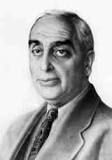
Béla Schick
(born Jul. 16, 1877, Balatonboglár - died 1967, USA)
Pediatric Doctor, Researcher. Pioneer in immunology. Devised the "Schick test" for determining susceptibility to diphtheria.
From the Jewish Virtual Library: Young Bela Schick quoted the Talmud: "The world is kept alive by the breath of children," to help persuade his father to allow him to pursue continued education in pediatrics, rather than to join the family grain merchant business in Graz, Austria. Schick became assistant at the Children's Clinic in Vienna, and later associate professor of pediatrics at Vienna University.
He emigrated to the United States, and in 1923 became pediatrician-in-chief at New York's Mount Sinai Hospital. He later (1936) was appointed clinical professor of pediatrics at Columbia University. Schick made important studies on scarlet fever, tuberculosis, and the nutrition for infants ... but gained international renown for the Schick Test. This test determined susceptibility to diphtheria, and eventually led to the eradication of the childhood disease that attacked 100,000 Americans in 1927, leading to about 10,000 deaths.
A massive five-year campaign, coordinated by Dr. Schick, virtually eliminated the dreaded disease that had taken countless young lives since it was first mentioned in the sixth century writings of Aetius. As a part of the campaign, 85 million pieces of literature were distributed by Metropolitan Life Co. with an appeal to parents to "Save your child from diphtheria." These illustrated brochures (reproduced here) were created by a talented young artist who had recently emigrated from Germany - Gerta Ries. Remarkably, this same Gerta Ries (Wiener) was commissioned over 75 years later to create the sculptured tribute to Dr. Béla Schick for the Jewish-American Hall of Fame.

Frigyes Riesz
(born Jan 22, 1880, Györ - died Feb. 28, 1956, Budapest)
Mathematician. A founder of functional analysis.
His younger brother and fellow renowned mathematician Marcel Riesz, introduced the Riesz means. Riesz was a founder of functional analysis and his work has many important applications in physics.
Riesz was appointed to a chair in Kolozsvár in Hungary in 1911. However, the Hungarian government was forced to sign the Treaty of Trianon on 4 June, 1920. Hungary was left with less than one third of the land that had previously been Hungary. Romania, Czechoslovakia and Yugoslavia all took over large areas but Austria, Poland and Italy also gained land from Hungary. Kolozsvár was no longer in Hungary after the Treaty of Trianon but rather it was in Romania and was renamed Cluj, so the Hungarian University there had to move within the new Hungarian borders and it moved to Szeged in 1920, where there had previously been no university.
In Szeged in 1922 Riesz set up the János Bolyai Mathematical Institute in a joint venture with Haar. Of course the Institute was named after the famous Hungarian mathematician whose birthplace was Kolozsvár, the town from which the university had just been forced to move after the French awarded Transylvania and the Banat to the Rumanians. In 1945 Riesz was appointed to the chair of mathematics in the University of Budapest. Riesz received many honours for his work. He was elected to the Hungarian Academy of Science and, in 1949, he was awarded its Kossuth Prize. He was elected to the Paris Academy of Sciences and to the Royal Physiographic Society of Lund in Sweden. He received honorary doctorates from the universities of Szeged, Budapest and Paris.

Imre Gyula Izsák
(born Feb. 21, 1929, Zalaegerszeg - died Apr. 21, 1965, Paris)
Astronomer. the Hungarian-American expert of celestial mechanics of the Space Age.
After the defeat of the 1956 revolution, three extremely talented young astronomers left Hungary: Tibor Herczeg, Imre Izsák (1929-1965) and István Ozsváth. Among those who left, Károly Lassovszky represented the older generation. He found a niche for himself at Harvard, one of the scenes of his youth. He was soon joined by Izsák. Both have been held in great respect by their colleagues for establishing a new and improved mathematical method for calculating the orbit of artificial satellites. Imre Izsak and fellow Hungarian Victor Szebehely worked in the field of celestial mechanics and contributed significantly to map the gravitation field of the Earth using the orbital perturbations of satellites. Izsak computed the orbits of American and Soviet ballistic missiles. Izsak utilized the observed orbits of artificial satellites to calculate the exact shape of the Earth.
Izsak died of a sudden heart attack on his way to a geodesic satellite symposium in Paris. There is a crater on the moon honoring Imre Izsák.

Victor Szebehely
(born 1921, Budapest - died Sep. 13, 1997, Austin, Texas)
Aerospace Engineer. Pioneer of Orbital Mechanics and a key figure in the Apollo Space Program.
Victor Szebehely was educated in Budapest and received a Master of Science in Mechanical Engineering in 1943 from the Budapest Technical University and a Doctor of Science in Engineering from the same university in 1946. Victor's Ph.D. thesis dealt with an analysis of the three body problem and therefore foreshadowed his later work on this most important subject. After the communist takeover of Hungary, he left for the U.S. in 1947.
While waiting to become a U.S. citizen he served as Associate Professor of Applied Mechanics at Virginia Polytechnic Institute. He also held visiting and temporary posts at the University of Maryland and George Washington University. Upon becoming a U.S. citizen in 1954, Victor went to work for the U.S. Navy in Washington, D.C. at the David Taylor Model Basin where he headed the Ship Dynamics Branch. Here, his work on the motion of small warships in heavy seas brought him international recognition. In 1956, he was awarded the Distinguished Order of Merit by the Government of the Netherlands for applying these results to the behavior of their naval vessels under the stormy conditions that exist in the North Sea. In 1956, a dimensionless number used in time-dependent unsteady flows was named “Szebehely’s number,” and in 1957, he was knighted by HRH Queen Juliana of the Netherlands.
At the beginning of the Space Age, his expertise in the three-body problem, obtained in Budapest, was warmly welcome. In 1957, Victor Szebehely began his work on the U.S. Space Program as a Manager of Space Mechanics at the General Electric Missiles Space Division near Philadelphia. For the next six years he worked on a number of programs of importance to the U.S. Space exploration effort. It was here that he began to apply the methods of treating the three body problem he had developed as part of his thesis work to the problem of going to the Moon. In 1963, Victor moved to Yale University as Associate Professor of Astronomy and he continued his work and the application of the restricted three body to the Apollo missions in the group headed by Dirk Brouwer. He served on the Yale faculty until 1968 and then he moved to Texas to assume a position as Professor in the Department of Aerospace Engineering and Engineering Mechanics at The University of Texas at Austin. In the September and October 1977 issues of the journal Celestial Mechanics, volume 16, an equation used to determine the gravitational potential of the earth, planets, satellites and galaxies was named “Szebehely’s equation.”
"He could apply the science of mechanics with great imagination to a specific problem," said Hans Mark, former deputy administrator at NASA. "His work got us to the Moon."
In 1983, he was appointed to the R.B. Curran Centennial Chair in Engineering at the University of Texas, Austin. In Austin, Victor continued his work on celestial mechanics which involved the development of methods to navigate spacecraft to the Moon and to other planets in the solar system. In doing this work, he developed relationships with NASA's Jet Propulsion Laboratory and the NASA-Lyndon B. Johnson Space Center, which have the missions of developing and operating spacecraft for planetary exploration and developing spacecraft to carry people, respectively. He made important contributions to the development of both of these institutions.

Péter Gergely
(born 1936, Budapest - died 1995, Ithaca, New York)
Architect and Structural Engineer. Founder of the National Center for Earthquake Engineering.
Peter Gergely completed his studies in Hungary, Canada and the United States and received his Ph.D. in 1963. He fought as a University National Guard in the Hungarian Freedom Fight of 1956 and escaped to the US from the Soviet invasion. For 32 years he was a professor at Cornell University. From 1983-88 he was chair of the Department of Structural Engineering and from 1985-88 director of the School of Civil and Environmental Engineering.
Gergely's research and discoveries, published in over 100 scientific papers, led to significant advancements in understanding the mechanics of reinforced and pre-stressed concrete and its application to building codes. He also made pioneering contributions in structural dynamics and earthquake engineering. His discoveries provided answers to many previous problems that occured in areas of moderate seismicity. His improved building codes for structures, especially nuclear plants in earthquake zones are used on a national level. Much of his discoveries were realized through the National Center for Earthquake Engineering which he helped found. He volunteered in many scientific associations and received six international awards. In 1992, Gergely, a dedicated Hungarian, received an honorary doctorate from the Technical University of Budapest for his international activities in the advancement of the construction industry and improvement of reinforced concrete.
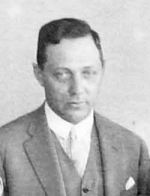
Alfred Haar
(born Oct. 11, 1885, Budapest - died mar. 16, 1933, Szeged, Hungary)
Mathematician. Introduced a measure on groups, now called the Haar measure, used by von Neumann, and other notables.
In 1903, in his final year in school, Alfréd Haar won first prize in the Eötvös contest in mathematics. Haar travelled to Germany in 1904 to study at Göttingen and there he studied under Hilbert's supervision, obtaining his doctorate in 1909.
Haar then taught at Göttingen until 1912 when he returned to Hungary and held chairs at the university in Kolozsvár (which is now Cluj in Romania), Budapest University and Szeged University. In fact after Word War I Kolozsvár was no longer in Hungary, so the University there had to move within Hungarian borders and it moved to Szeged, where there had previously been no university. Haar, together with Riesz, rapidly made a major mathematical centre from the new university. In 1932 he introduced a measure on groups, now called the Haar measure, used by von Neumann, and other notables.
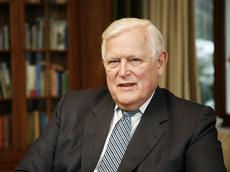
Rudolf Emil Kálmán
(born May 19, 1930, Budapest)
Mathematician. Developed the Kálmán Filter which is the "greatest discovery in statistics in our century." Kalman filtering is also the method used in GPS (Global Positioning Systems) for navigation.
Kalman emigrated to the US in 1943 and received the bachelor's and master's degrees in electrical engineering, from the Massachusetts Institute of Technology in 1953 and 1954 respectively. He received the doctorate degree (D. Sci.) from Columbia University in 1957. In the early years of his career he held research positions at IBM and at the Research Institute for Advanced Studies in Baltimore. From 1962 to 1971, he was at Stanford University. In 1971, he became a graduate research professor and director of the Center for Mathematical System Theory at the University of Florida, recently retiring with emeritus status.
Kalman's contributions to control theory and to applied mathematics and engineering in general have been widely recognized. In 1985, he was one of four recipients of the Kyoto Prize, inaugurated in that year by the Inamori Foundation of Japan. The Kyoto prize, which in 1985 carried a cash award of 45 million yen (then about $200,000), is sometimes referred to as the "Japanese Nobel prize." It recognizes "outstanding intellectual or creative activities which have significantly enriched the human experience." Kalman received the prize in the field of advanced technology. Among the other honors Kalman has received are the Institute of Electrical and Electronics Engineers' highest award, the Medal of Honor (1974), and the American Mathematical Society's Steele Prize (1986), which recognized the fundamental importance of the papers on linear filtering Kalman published in 1960 and 1961. Kalman is a member of the French, Hungarian, and Russian Academies of Sciences and of the National Academy of Engineering, and is a Fellow of the American Academy of Arts and Sciences.

Arthur Erdélyi
(born Oct. 2, 1908, Budapest - died Dec. 12, 1977, Edinburgh, Scotland)
Mathematician. His works are cited as "the most widely cited mathematical works of all time and a basic reference source for generations of applied mathematicians and physicists throughout the world."
Erdelyi attended primary and secondary schools in Budapest from 1914 to 1926. He went to Brno, Czechoslovakia to study electrical engineering. However, after winning prizes in a mathematics competition in his first year he was persuaded to study mathematics. He began research in mathematics and his first paper was published in 1930.
By the end of 1936 Arthur had 18 papers in print, another 11 appearing in 1937. Arthur wrote no doctoral thesis, he merely matriculated at the University of Prague, and submitted his papers instead of a thesis. He was awarded a doctorate in 1938 but because of the Nazi invasion of Czechoslovakia he was told he had to leave the country by the end of 1938 or be sent to a concentration camp. He made it to Scotland where he held a research grant from Edinburgh and later became a lecturer there.
In 1947 Erdélyi arrived in Caltech as a Visiting Professor. After returning to Edinburgh for session 1948/49 he resigned in 1949 to take up a chair in California. At Caltech Erdélyi headed a team which produced 3 volumes of Higher Transcendental Functions and 2 volumes of Tables of Integral Transforms.
In 1964 he returned to Edinburgh where a second chair of mathematics had been created to provide leadership since Aitken was in very poor health. He remained in Edinburgh until his death, continuing a steady stream of high quality papers up to the time of his death. A list of 178 mathematical papers and articles. Erdélyi received many honours, the most prestigious being elected a Fellow of the Royal Society in 1975.

Madeleine Forró Barnóthy
(born 1904, Zsámbok - died 1993, Chicago, Illinois)
Astrophysicist, Pioneer in the study of Cosmic Radiation, Bio-Magnetism and Magnetic Therapy, first Woman to earn a doctorate in physics in Hungary.
Barnothy studied in Budapest and Göttingen, Germany. In 1928 she earned her doctorate in physics. From 1928 to 1948 she was a physics professor at the Budapest University. In 1948 she settled in the USA with Jenö Barnóthy, her husband and fellow scientist. First she taught physics at the Barat College in Lake Forest, Illinois. In 1955 both Barnóthy's were asked to lead a company which manufactured radiological research instruments. At the same time (1953-1959) Madeleine Forró Barnóthy was also teaching physics at the University of Illinois.
Barnothy specialized in cosmic radiation, astro and nuclear physics and biomagnetism. She was the author of over 150 scientific papers and editor of the two-volume book Biological Effects of Magnetic Fields (1964). Already in 1964 Dr. Madeleine F. Barnóthy predicted that the magnetic field will in due time develop into a powerful new analytic and therapeutic tool of medicine. Her last scientific article concerning astronomy (What is Time?), co-written with husband Jenö Barnóthy, was published in 1991, two years before her death. She was a member of numerous American and international scientific associations. Forró Barnóthy was a pioneer in the research of the phenomena of cosmic radiation, a prerequisite for conquering the universe.
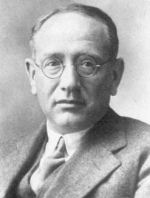
George Pólya
(born Dec. 13, 1887, Budapest - died Sep. 7, 1985, Palo Alto, California)
Mathematician. "The Great Teacher"
Polya worked in probability, analysis, number theory, geometry, combinatorics and mathematical physics. He left Hungary for Brown University for two years and later took up an appointment at Stanford. He enjoyed the esteem of the mathematical community not only for his deep and influential contributions in a variety of mathematical fields, but also for his groundbreaking work in the teaching of mathematics. His standing in the latter area could rest solely on his having written one of the most widely read books in mathematics, the still-popular How to Solve It. Various other books were almost equally influential, however: Mathematical Discovery and Mathematics and Plausible Reasoning, to name but two.
In addition to his championing problem-solving, he contributed to mathematics important results in complex and real analysis, inequalities, mathematical physics, combinatorics, probability theory, number theory and geometry. He coined the phrases "random walk" and "central limit theorem" and gave to mathematics the Pólya Enumeration Theorem, along with many other ideas used widely today.
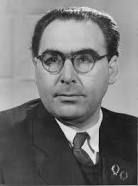
Alfréd Rényi
(born Mar. 30, 1921, Budapest - died Feb. 1, 1970, Budapest)
Mathematician. Discovered "one of the strongest methods of analytical number theory."
His scientific work covers almost all of mathematics; he has made relevant contributions in all branches, and was founder of the Hungarian Probability Theory School. His research departed from Number Theory. Known by the nickname of Buba, he is best remembered for proving that every even integer is the sum of a prime and an almost prime number (one with only two prime factors). He finished his studies in Budapest. After graduation he won a competition in Greek language, and from 1940 on he was a student of Lipót Fejér in Budapest. During Word War II he was in a labor camp. He finished his PhD studies in Szeged under Friedrich Riesz in 1940.
Renyi was the founder, and for 20 years the director, of the Mathematical Institute of the Hungarian Academy of Sciences. He was a famous raconteur remembered for many performances of his dialogue, which he spoke with his daughter, on the nature of mathematics. He received the Kossuth Prize twice (1949, 1954).
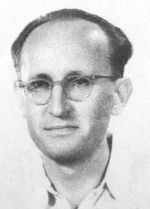
Paul Turán
(oorn Aug 18, 1910, Budapest - died Sep. 26, 1976, Budapest)
Mathematician. Erdos's closest friend and collaborator and Great Hungarian number theorist.
Worked primarily in number theory. He had a long collaboration with fellow Hungarian mathematician Paul Erdős, lasting 46 years and resulting in 28 joint papers.
Turán's first work was on probabilistic number theory and in 1938 he produced the sum-power method. He died of cancer with his wife at his bedside. She reported that the last words he murmured were "Big Oh of One." Mathematicians tell this story with awe and inspiration as he was doing number theory to the very end!

József Petzvál
(born 1807, Szepesbéla, Hungary - died 1891, Vienna, Austria)
Inventor. A Founder of Photography: His Work allowed for construction of modern cameras and made practical portrait-photography possible. Invented Photographic Objective Lens, Darkroom, Opera Glass, and perfected the telescope.
Petzval is best remembered for his work on optical lenses and lens aberration done in the early 1840's (Petzval curvature is named after him) which allowed the construction of modern cameras. Petzval produced an achromatic portrait lens that was vastly superior to the simple meniscus lens then in use. The Petzval lens, though a very old design form, is still a mainstay in lens libraries.
There are different versions of Petzval's name, and, in addition to the one given here, he is often known as Jozef Maximilian Petzval. Jozef was the son of a schoolmaster and he attended school in Levoca (original Hungarian name needed) and Kassa (now Kosice after Slovak annexation). In 1826 he entered the University of Pest to study philosophy and mathematics. Petzval became an assistant at the University of Pest in 1835. Then, two years later, he accepted a chair of mathematics at the University of Vienna. At the University of Vienna he studied in detail Daguerre's invention, the so-called daguerreotype, and took on shortening its exposure time from minutes to seconds.
A tragic story:
A colleague suggested Petzval design a new camera lens to compete in a prize competition. Petzval initially resisted (precisely as Ernst Abbe was to resist Carl Zeiss's similar suggestion a generation later) but soon relented and began work. Petzval obtained the assistance of three corporals and eight gunners from the Austrian army at the direction of Archduke Ludwig, then Director-General of Artillery, to aid in his calculations. Within six months, the design was completed and took the photographic world by storm. In 1840, his extraordinary mathematical talent allowed him to assess and build an anastigmatic with six times greater luminosity.
A colleague suggested Petzval design a new camera lens to compete in a prize competition. Petzval initially resisted (precisely as Ernst Abbe was to resist Carl Zeiss's similar suggestion a generation later) but soon relented and began work. Petzval obtained the assistance of three corporals and eight gunners from the Austrian army at the direction of Archduke Ludwig, then Director-General of Artillery, to aid in his calculations. Within six months, the design was completed and took the photographic world by storm. In 1840, his extraordinary mathematical talent allowed him to assess and build an anastigmatic with six times greater luminosity.
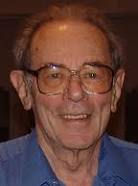
János Kornai
(born Jan. 21, 1928, Budapest)
Economist, Harvard Professor. Developed the "economics of shortage" theory.
Kornai's distinguished career in economics reflects a unique combination of East-West experiences. Born and educated in Hungary, Professor Kornai was an early critic of centralized economies. His PhD dissertation, entitled ‘Overcentralization’, written before and published after the 1956 Hungarian Revolution by Oxford University Press, was the first critical book on the command economy written by an ‘insider’. The work caused considerable controversy in Hungary and elsewhere, and Professor Kornai lost his job in Hungary as a university professor because of it. Yet, he continued to live and work in Hungary, and is respected both for his decision to remain there and for his many contributions since then to economics in general and to the Hungarian transition in particular.
His most influential book on the subject was The Economics of Shortage, which demonstrated that chronic shortages are not consequences of planners’ errors or the wrong prices, but rather inevitable consequences of the traditional, ‘classical’ communist system. The book has been translated into many languages – in China it has sold over 100,000 copies. Over the years, Professor Kornai has written a series of books questioning general equilibrium theory and analyzing economic shortage and the communist system. In light of the recent social and economic changes in Central and Eastern Europe, much of his written work has turned out to be prophetic.
Professor Kornai joined the faculty of Harvard University on a part-time basis in 1986 and was named the Allie S. Freed Professor of Economics there in 1992. His ties to Hungary remain strong: In 1992, he became a Permanent Fellow of the Collegium Budapest, Institute for Advanced Study; and, since 1967, he has been a Research Professor at the Institute of Economics, Hungarian Academy of Sciences. He has been President of the Econometric Society and the European Economic Association. He is a Member of the Hungarian Academy of Sciences and of five other Academies. He has received the highest Hungarian prizes for scholarship, as well as the Seidman Award (USA), and the Humboldt Prize (Germany); he has also been made an Officier of the Legion d'Honneur.
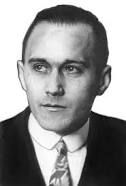
Kálmán Tihanyi
(born Apr. 28, 1897 - died Feb. 26, 1947)
Physicist. Father of the Picture Tube and Television Pioneer (NOT Zworykin.) Invented the Picture Tube (Iconoscope), Infrared-sensitive (night vision) television, and Flat TV Tube.
Born in Uzbeg, Coloman Tihanyi studied electrical engineering and physics in Pozsony (now Bratislava after Slovak annexation) and Budapest. His most important inventions - bought and developed by RCA, Loewe, and Fernseh AG - concerned the design of the cathode ray tube for television.
He patented his fully electronic television system in 1926. Though superficially similar to such earlier proposals, it represented a radical departure. Like the final, improved version he would patent in 1928, it embodied a new concept in design and operation, building upon a phenomenon that would become known as the "storage principle." The invention was received with enthusiasm by Telefunken and Siemens, but in the end they opted for continued development of mechanical television.
RCA approached Tihanyi in 1930, after the publication of his patents in England and France. Negotiations continued until 1934, when RCA, ready to unveil its new television system based on Tihanyi's design, purchased his patents. These covered controlling features that the U.S. patent examiners, citing Tihanyi's prior publications, had denied Zworykin's 1930 - 31 applications. U. S. patents assigned to RCA were issued to Tihanyi in 1938-39 with 1928 priority. Now it is became clear that the originator of this pivotal invention was Kalman Tihanyi. Tiahnyi's device was manufactured from 1930 on for transmitting television programs. Charge-storage has remained the basic principle of modern television. In 1939 he submitted a patent application in England for the flat TV tube.
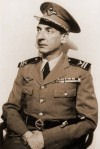
Count Ede László Almásy
(born 1895, Borostyanko, Hungary - died 1951, Salzburg)
Explorer, Double Agent. Immortalized in "The English Patient."
Almasy exhibited a penchant for new technology early on as he was already an aviation pioneer and expert driver by the age of 17. By the age of 20 he was a pilot in the Austro-Hungarian Air Force. Almasy ran several car and plane expeditions to Africa in the 1920s and 30s. He engaged in exploring the Sahara desert, carried out cartographic surveys, and also discovered prehistoric cave paintings. His name is preserved to the present day by an airport near Cairo. During World War II Almasy served on the staff of Field Marshall Erwin Rommel as head of a group of desert scouts. Rommel also entrusted him with various intelligence missions, one of which was the exploit at the heart of the novel The Eye of the Needle by Ken Follett.
When the Hungarian arrived in North Africa in 1926 he was 31 and penniless, a bitter survivor of World War I in which he had served with the defeated Austro-Hungarian air force. In North Africa, the count's only asset was a connection with some wealthy Egyptian princelings whom he had met on shooting parties in Hungary. They were keen to enjoy some hunting and adventure in the desert to the south of their country, and turned to the veteran pilot for help. Despite his boy-scout looks, Almasy loved intrigue. In the 1930s Almasy offered his services to British intelligence, but was turned down because he was suspected of being pro-German. He then started passing his hand-drawn maps to grateful officers of Mussolini's army in Libya. By 1940, he was fully involved with the Abwehr - German military intelligence - and proposed a plan directly to its chief in Berlin to provoke an uprising in British-occupied Egypt, led by a local pasha who was one of his pre-war contacts. The plan came to nothing when the pasha crashed his plane into a palm tree as he headed to Germany for his briefing. By the summer of 1942, Rommel's Afrika Korps was pushing to within hours of Cairo, and the count seized his chance to impress with his boldest plan yet. He would motor with a small convoy 3370 kilometres across the great desert from Libya, entirely through enemy territory, using his own sketch maps. When he reached the Nile he would drop off two agents, then head back the same way. He achieved this stupendous feat of endurance, and Rommel personally promoted him to the rank of major and awarded him an Iron Cross.
Almasy survived the desert campaigns and continued to work for the Abwehr in Turkey, until he sensed he was again on the losing side of a world war. This time he fed his secrets to the British. Even so, when the war ended, he was sent by the Allies to Hungary and imprisoned in a Russian camp. He escaped with the help of friends in the Egyptian royal family, and was bundled into an aeroplane bound for Cairo. Almasy's published memoir of part of his service with and for Rommel, first published in the early 1940s, has just been republished in Hungary.

Adolph Zukor
(born 1873, Ricse, Hungary - died 1976, Century City, CA)
"Mr. Motion Pictures" and Oscar Winner.
Producer and Founder of the Paramount Pictures Empire and Loew's Theatres. Produced the first full-length motion picture, "The Prisoner of Zenda." Received a special Academy Award in 1948 for his "contribution to the industry." One of the original studio "moguls." Zukor arrived in the US at 16, got one of his first jobs as a furrier's apprentice. Zukor worked his way up to become a well-heeled Chicago furrier and, in 1903, teamed with Marcus Loew to open the first of a series of penny arcades. Two years later the team formed Loew's Consolidated, with Zukor as treasurer of the far-flung empire of theaters. 80 years later, he was still going to work every day at Paramount Pictures. Adolph Zukor ruled Paramount Studios with an iron hand for decades, forming alliances with such other powerful and influential figures like these, shown left to Right: Jesse L. Lasky, Adolph Zukor, Samuel Goldfish (later Goldwyn), Cecil B. DeMille and Albert Kaufman
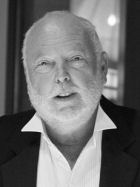
Andrew Vajna
(born August 1, 1944, Budapest)
Producer, Hollywood Legend, former President of Cinergi Productions, co-Founder of Carolco Pictures.
Another Hungarian-born Hollywood "Mogul." Fled Soviet troops and left Hungary in 1956. During a career that spanned the globe, he has been one of the most important producers in Hollywood for the past 20 years. Carolco made motion picture history when it introduced a new cinematic hero, Rambo. Other Carolco projects include Music Box, Total Recall, Air America and Jacob's Ladder. Other films include Die Hard: With a Vengeance, Terminator, Color of Night, Judge Dredd, The Scarlett Letter, Oliver Stone's Nixon, Evita, An Alan Smithee Film: Burn Hollywood Burn, Shadow Conspiracy, Out of Order / A Miniszter félrelép and The 13th Warrior. Also founded Cinergi.

William Fox
(born Vilmos Fried, January 1, 1879, Tulchva, Hungary - died May 8, 1952, New York)
Producer and Hollywood Mogul. Founder of Fox Studios.
Fox began his US career in the garment trade and moved into the penny arcade business in 1904. He went on to develop successful film exhibition, distribution, and production operations, merging all three interests with the formation, in 1915, of the Fox Film Corporation, one of the most powerful and creative studios of the silent era. At the peak of his power, Fox owned over 500 movie houses in the US (he bought control of the giant Loew's, Inc.) and the Gaumont Theatres chain in Great Britain. By the end of the 1920s the company had accumulated several top stars and directors and produced a number of prestigious films; the stock market crash of 1929, however, forced the overextended Fox to sell his shares in the corporation. His company merged with 20th Century Pictures to form 20th Century Fox in 1935. In 1936, a year after Fox studios merged with 20th Century, Fox bribed a judge during the liquidation of his holdings in bankruptcy proceedings. His sentence, a year in prison, began in 1941. Paroled in 1943, he was a pariah in Hollywood. Though secure from his many patent holdings, the industry for which he had been so visionary was closed to him. No industry representative came to eulogize at his funeral.
Fox invented the global media newsgathering organization emulated today by CNN, BBC, ITN, DW and others. Fox secured his place in history by commercializing talking pictures and then introducing a larger movie screen.
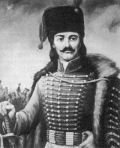
Col. Michael de Kováts
(born 1724, Karcag, Hungary - died May 11, 1779,Charleston, SC)
US Military Hero. Founding Father of the US Cavalry. "Golden Freedom Cannot be Purchased with Yellow Gold" he wrote in a letter to Benjamin Franklin, 1777
A Nobleman born in Karcag and officer in Hungarian Cavalry under Maria Theresa. Captain in the famous Prussian Cavalry under Frederick the Great. After hearing of American uprising, he offered his sword to Ben Franklin, then Ambassasor to France. US Congress made him Colonel-Commander of the legendary Pulaski Legion. He recruited, trained, organized, and led into battle the first American Cavalry. On May 11, 1779, Colonel Kovats gave his life in the American War for Independence while leading the Continental Army cavalry he had trained in Hungarian hussar tactics against a British siege of Charleston. The British remarked that Kovats' forces were "the best cavalry the rebels ever had." He is the first Hungarian to give his life for American freedom and independence.
The American Hungarian Federation (AHF) established the Colonel Commandant Michael Kovats Medal of Freedom to honor outstanding individuals and recognize their life's achievements, dedication to freedom and democracy, promotion of transatlantic relations, and meritorious contribution to society. The award, AHF's highest honor, is open to Hungarians and non-Hungarians alike.
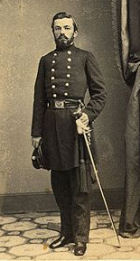
Major Charles Zágonyi
(born 1826, Szatmar, Hungary - died unknown)
US Military Hero. "The Union Forever!" Led the famous Civil War "Zágonyi Death Ride."
Raised into the military, he became a Huszar officer with Polish General Bem and Kossuth in Hungary's fight for democracy in 1848. He was wounded in battle and spent two years as an Austrian POW. After the war, he came to the US and joined the Union. Under General John Fremont, Major Zágonyi, the former Huszár officer, was commissioned to organize his first cavalry guard which came to be known as "Fremont's Body Guard." He trained his men as Huszárs and they all soon looked the part.
The Death Ride:
Despite being outnumbered 2000 to 300, Zagonyi convinced the hestitating Gen. Fremont to attack. Zágonyi went on to rout confederate forces at Springfield, Missouri in October, 1861. Fremont compared Zágonyi's feat to that of the famed, "Charge of the Light Brigade." His surprise attack, a complete success, left over 300 enemy casualties. The monument commemorating this event in Springfield, Missouri describes it as one of the "most daring and brilliant cavalry charges of the Civil War." The famous "death ride" was celebrated in poems, paintings and articles.
Wild Bill Hickock rode with Zagonyi, the "dashing Hungarian."
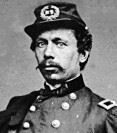
Major-General Julius H. Stahel Számwald
(born Nov. 5, 1825, Szeged, Hungary - died Dec. 4, 1912, New York City)
Congressional Medal of Honor winner.
At the outbreak of the War of Liberation with Louis Kossuth against the ruling Hapsburg dynasty in the spring of 1848, Stahel immediately joined various patriotic organizations and also enlisted in the revolutionary army. In the battle of Branyiszkó, February 5, 1849, Stahel sustained serious wounds and was decorated for bravery.
By May 1849 the Hungarian insurgents inflicted a series of decisive defeats upon the Hapsburg Imperial Army and the Croat, Serb, Slovak and Rumanian irregulars supporting the House of Hapsburg. A small Russian army, which made an informal incursion into eastern Hungary to help the hard-pressed Hapsburg troops there, was routed and expelled. Czar Nicholas I, the autocrat of Europe, was more than willing to extend a hand in stamping out liberalism and soon a Russian army of some 300,000 poured into Hungary. The revolutionaries felt confident that the Russian invasion would mobilize Western support on their side, but their hopes were cruelly dashed. Governor Lajos Kossuth and thousands of others, Stahel among them, fled abroad after the defeat.
He moved to New York and worked, like Pulitzer, as a Journalist. At the outbreak of the Civil War, Stahel and Ludwig Blenker, a flamboyant German expatriate, organized the 8th New York Volunteer Infantry, the first German-American regiment in the Union army. Stahel became the regiment's lieutenant-colonel. At the First Battle of Bull Run, July 20, 1861, with his 8th New York Infantry, on his own initiative took command of the rear guard and made possible the withdrawal of the main forces, thus preventing Confederate forces from advancing on Washington. President Lincoln personally expressed his appreciation for this action. For their valiant conduct on the battlefield, Stahel was promoted to Colonel of the 8th New York. Shortly afterwards, on November 12, Stahel received his star as a brigadier-general. A few days after John Singleton Mosby's daring raid behind the Federal lines at Fairfax Court House during the night of March 8, Lincoln summoned Stahel to the White House and ordered him personally to take charge of the cavalry at Fairfax. He told Stahel in no uncertain terms that the raids upon the lines around Washington must stop. The three brigades of cavalry in the Department of Washington were organized as a division, which together with the outposts were placed under Stahel's command. On March 14, he was raised to the rank of major-general.
Stahel received the US Congressional Medal of Honor for his bravery at the Battle of Piedmont in Virginia. While wounded, the General led a cavalry charge which led to a Union victory. After the War, he was appointed U.S. Consul to Japan. In 1912 his remains were placed in Arlington National Cemetery.
Early in 1866 Stahel was appointed by President Andrew Johnson consul at Yokohama, Japan. There he succeeded in opening additional ports to American trade. Afterwards, he served as consul to Osaka and Hiogo. He remained in Japan until 1884, when he was made consul in Shanghai, China.
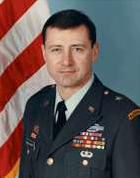
Huba Wass de Czege
(born Aug. 13, 1941, Kolozsvar, Transylvania)
Brigadier General, US Army Founding Director of the US Army’s School of Advanced Military Studies and Architect of AirLand Battle Doctrine.
As one of the "Jedi Knights," helped the planning of Operation Desert Storm. First in Class, West Point 1964. Chief of Arms Control Branch, Office of the Supreme Allied Commander, SHAPE, Belgium. Author of the 1982 and 1986 versions of Field Manual 100-5, "Operations," the Army's main warfighting doctrine publication.
He and his brothers, in remembrance of their father, Count Albert Wass de Czege, the noted Transylvanian-Hungarian novelist, established the Czegei Wass Foundation in 1996. The purpose of the Foundation is to provide economic and humanitarian aide to the small villages in Transylvania so that the villagers can improved their lives during the reconstruction period following Communism. Headquartered in the United States, it has established sister foundations both in Hungary and Romania.
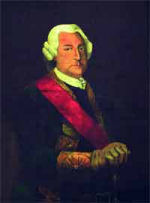
Count Lászlo Bercsényi
(born Aug. 3, 1689, Eperjes, hungary - died Jan. 9, 1778, Luzancy, France
Huszár, Founder of the modern French Cavalry. Marshal of France.
The Light Cavalry of the Magyars - the Hussars - was widely imitated by other nations, both in terms of organization and detail of uniform. At the end of the 17th century, Louis XIV ordered the establishment of three separate Hungarian regiments.
According to today's French tradition, the founder of the modern French cavalry was Laszlo Count Bercsenyi (Bercheny in French spelling) son of the famous general under Rákoczi. Bercsenyi was promoted to the rank of general for his heroism in the War of Polish Succession. During the War of Austrian Succession (1741 1748) the hussar regiment of Bercsenyi covered the retreat of the French Army from Bohemia. For his services in this campaign he was appointed by Louis XV (1723-1774) to Inspector General of the French cavalry. In 1756 Bercsenyi, already 67 years old, was promoted to the highest rank of the French Army: Marshal of France. After receiving amnesty from Empress Maria Theresa, he went back to Hungary for awhile, but, disillusioned, returned to France where he died in 1778 at the age of 89.
Today the First Hussards are an active parachute regiment stationed in Tarbe, France. The First Hussards were deployed in Indochina during the Vietnam era and as part of the coalition forces in desert storm.
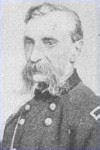
General Alexander Asbóth
(born Dec. 18, 1811, Keszthely, Hungary - died Jan. 21, 1868, Argentina)
US Chief-of-Staff, US Minister to Argentina.
Asboth graduated from the academy at Selmecbanya and, after receiving government appointment as an engineer, worked in various parts of Hungary becoming a General in the Hungarian Honvedseg. During the Hungarian Revolt of 1848 against Austria, he associated himself with Lajos Kossuth and followed him into exile in the United States in 1851. By 1861 he had become a citizen and offered his services to the Union when the Civil War broke out.
John C. Fremont, who had known him in New York, applied for his services, appointed him a Brigadier General of Volunteers and his chief-of-staff. Seriously wounded three times during the war, he was appointed to the rank of general in l864. Distinguished himself at the Battle of Pea Ridge, Arkansas, where he was wounded in left arm. Despite the wound, he saddled up next morning. His arm was later shattered and a bullet lodged under his cheek in the Marianna engagement in Florida. In 1866, he was appointed U.S. Minister to Argentina and Uruguay. The wound in his cheek failed to heal, and on January 21, 1868, he died and was buried in Buenos Aires, Argentina. His remains were exhumed in Argentina, and he came home on October 23, 1990 to full military honors. He lies today in Section 2 of Arlington National Cemetery. His grandson attended the funeral and is in the Virginia National Guard.
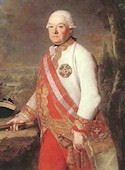
Count András Hadik
(born Oct. 16, 1710, Csallóköz, Hungary - died Mar. 12, 1790)
Legendary Hussar, Cavalry Hero, General. Executed the most famous hussar action in history.
András Hadik, son of a lesser noble family, was born on October 16, 1710 in Csallóköz (Hungary, now called Žitný ostrov in Slovakia after annexation into Czechoslovakia at the Treaty of Trianon in which Hungary lost 2/3 of its territory in 1920). Other sources say he was born Kőszeg, Kingdom of Hungary.
His father, Mihály Hadik was also a cavalryman. He entered the service of the Austrian Empire as a young and humble Hungarian hussar in the cavalry regiment. Owing to his brilliance and attributes, he rapidly rose to officer ranks taking part in every campaign and battle in the theatre of war that the Empire prosecuted. Hadik volunteered for the Ghilányi Hussar regiment when he was 20, and at 22 he was given the rank of officer and became the standard bearer in the Dessewffy Hussar regiment in the Austrian army. Hadik fought in the War of the Polish Succession (1733 – 1738) and the Austro-Turkish War, 1737-1739. In 1738, Hadik was promoted to the rank of captain.
During the War of the Austrian Succession (1740 – 1748) he gained fame for his actions against the Prussians at the city of Neisse (Nysa, now Poland) using surprise attacks and tricks under the unwritten laws of the so-called "small war," relying on the excellent training of his light cavalry hussars. During the war, he was again promoted, this time to the rank of Lieutenant-Colonel. In 1744 he gained the rank of Commanding Colonel of his own hussar regiment, then near the end of the war in 1747 he attained the rank of General and was appointed commander of a cavalry brigade.
Early in the Seven Years' War (1756 – 1763), Hadik executed the most famous hussar action in history: when the Prussian King Frederick was marching south with his powerful armies, the Hungarian general unexpectedly swung his 5,000 force of mostly hussars around the Prussians and took their capital Berlin. The city was spared for a negotiated ransom of 200,000 thalers. For this feat, Hadik was promoted to the rank of Marshal.
For his outstanding lifelong service Empress Maria Theresa bestowed upon him nobility, granting him the title of Count. The Austrian Imperial Cavalry that was established in 1702, was renamed after him. He elevated the fame of the Hungarian hussars in 18th Century Europe. As a genial leader and experienced strategist his highest attainment was that of Chairman of the War Council in Vienna. He held the post of Commandant of Buda Castle, Governor General of Transylvania, and in that capacity was the first to formally recommend the abolition of serfdom in Hungary.
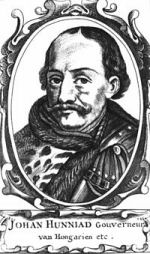
János Hunyadi
(born circa 1407 - Died 1456, Nadorfehervar (Belgrade), Hungary
The Siege of Belgrade or Battle of Belgrade or Siege of Nándorfehérvár occurred from July 4 to July 22, 1456. After the fall of Constantinople in 1453, the Ottoman sultan Mehmed II was rallying his resources in order to subjugate the Kingdom of Hungary. His immediate objective was the border fort of the town of Belgrade (in old Hungarian Nándorfehérvár.) John Hunyadi, a Hungarian nobleman and warlord who had fought many battles against the Ottomans in the previous two decades, prepared the defenses of the fortress.
The siege eventually escalated into a major battle, during which Hunyadi led a sudden counterattack that overran the Ottoman camp, ultimately compelling the wounded Sultan Mehmed II to lift the siege and retreat. The battle had significant consequences, as it stabilized the southern frontiers of the Kingdom of Hungary for more than half a century and thus considerably delayed the expansion of the Ottoman Empire.
The Pope celebrated the victory as well, and he previously ordered all Catholic kingdoms to pray for the victory of the defenders of Belgrade. This led to the noon bell ritual that is still undertaken in Catholic and old Protestant churches to this day.
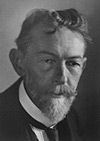
1925 - Nobel Prize for Chemistry
Richard Zsigmondy
(born Apr. 1, 1865, Vienna - died Sep. 24, 1929, Göttingen)
"For his work on methods in the study of colloid chemistry." Colloids consist of submicroscopic particles dispersed throughout another substance. He invented the ultramicroscope in the pursuit of his research.
His father, doctor Adolf Zsigmondy, had done a great deal to promote dentistry in Austria, had invented several surgical instruments and devices, and had published several scientific and medical works. He encouraged his four children's interest in the natural sciences. He died when Zsigmondy was only 15 years old. Zsigmondy's mother, Irma von Szakmary, encouraged her children to lead an outdoor life, to take an interest in the arts and to follow their own inclinations. Zsigmondy and his brothers spent much of their time climbing, mountaineering, swimming and diving.
Zsigmondy's interest in chemistry and physics developed at an early age; he studied and carried out many of the experiments in his own small laboratory in his home. After receiving his doctorate from the University of Munich in 1889, Zsigmondy worked in research at Berlin and then joined the faculty of the University of Graz, Austria. From 1908 to 1929 he was director of the Institute for Inorganic Chemistry at the University of Göttingen where he remained until his retirement in February 1929. Following the First World War, the Institute suffered severe shortages of the most simple chemical materials and scientific research work became very difficult. In 1925 Zsigmondy was awarded the Nobel Prize for Chemistry for his work on the heterogeneous nature of colloidal solutions. This made it possible for him to overcome, with deep gratitude, most of the difficulties he had encountered in the previous years.

1939 - Nobel Prize for Chemistry
Leopold Ruzicka
(born Sep. 3, 1887 Vukovár - died 1976)
"For his work on polymethylenes & higher terpenes."
Hungarian, Croatian, Czech? Yes. Vukovar is on the Hungarian side of the Danube in the former Szerem county. For almost 900 tears, Hungary and Croatia were closely tied until French meddling and the creation of Yugoslavia in 1920 thus Balkanizing Croatia and this and other regions of Hungary. Vukovar, it's county of Szerem and half of Baranya county were transferred to Croatia after WWI. This area was a complex multi-ethnic region and Serbian ethnic cleansing tried to "clean" it. His great-grandparents included a Czech, from whom the name Ruzicka stems. His mother was from Eszek (Osijek) where, after the early death of his father, he attended a Hungarian school where Croatian was used. He attended the Technische Hochschule at Karlsrohe, where he began his chemical studies in 1906. He enjoyed the curricular freedom at Karlsruhe. He completed his laboratory courses in 1 3/4 years and then immediately started his doctoral work.
In 1921, the Geneva perfume manufacturers Chuit, Naef & Firmenich, asked him to collaborate with them. By this time the investigations that were to lead to the elucidation of the constitutional formulas of the higher terpenes has already been started. By far the most important fruits collected in the perfumery garden were the elucidations of the structures of the naturally occurring musk perfumes, civetone and muscone. Following these discoveries Ruzicka and his co-workers were able to prepare the whole series of alicyclic ketones with 9 to over 30 carbon atoms as ring members, compounds that had previously been believed to be incapable to existence.
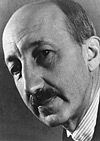
1943 - Nobel Prize for Chemistry
George de Hevesy
(born Aug 1, 1885, Budapest - died 1966)
"For his pioneering work with isotopes as tracers. " Winner of Atom for Peace Award 1959.
Nuclear power has not gotten great press, but not so well known are the many other ways the "peaceful" atom has slipped quietly into our lives, often unannounced and in many cases unappreciated. Radioisotopes and radiation have many applications in agriculture, medicine, industry and research. They greatly improve the day to day quality of our lives. We owe it to George de Hevesy.
Isotopes are different forms of an atom of the same chemical element. They have identical chemical properties but a different relative atomic mass. While the number of protons is the same, the number of neutrons in the nucleus differs. Some isotopes are referred to as 'stable' and others as 'unstable' or 'radioactive'. It is the radioactive nature of these unstable isotopes, usually referred to as 'radioisotopes', which gives them so many applications in modern science and technology. The first practical application of a radioisotope was made by George de Hevesy in 1911...
At the time de Hevesy was a young Hungarian student working in Manchester with naturally radioactive materials. Not having much money he lived in modest accommodation and took his meals with his landlady. He began to suspect that some of the meals that appeared regularly might be made from leftovers from the preceding days or even weeks, but he could never be sure. To try and confirm his suspicions de Hevesy put a small amount of radioactive material into the remains of a meal. Several days later when the same dish was served again he used a simple radiation detection instrument - a gold leaf electroscope - to check if the food was radioactive. It was, and de Hevesy's suspicions were confirmed.
The son of Louis de Hevesy, Court Counsellor and Eugénie, née Baroness Schosberger, he matriculated at Budapest's Gymnasium of the Piarist Order. In 1903 he studied at Budapest University and Berlin Technical University and gained his doctor's degree at the University of Freiburg in Breisgau in 1908. He travelled to England in 1910 to study under Professor Ernest Rutherford at Manchester. He interrupted early in 1913 his studies to carry out jointly with Frederic Paneth the first radioactive-tracer experiment at the Vienna Institute of Radium Research. During his stay in Vienna he obtained the Venia Legendi in the University of Budapest. In 1915 he was drafted into the Austrian-Hungarian Army. After the end of the war he was teaching for 6 months in the University of Budapest and left the spring of 1919 for Copenhagen to discuss his future activities at Niels Bohr's Institute which was to be erected. In 1920 he settled in Copenhagen. Six years later he returned to Freiburg as Professor of Physical Chemistry. In 1930 he was appointed Baker Lecturer at Cornell University, Ithaca. Four years later he took up again his activities at Niels Bohr's Institute which he terminated in 1952. He was domiciled in Stockholm since 1943 and was an Associate of the Institute of Research in Organic Chemistry. In 1949 he was elected Franqui Professor in the University of Ghent. In his retirement, he remained an active scientific associate of the University of Stockholm.
His early investigations involved a study of the chemical behavior of molten salts and his introduction to practical radiochemistry came in Rutherford's laboratories at Manchester. His work there, and later in Vienna and Budapest, mainly concerned the investigation and use of radium and lead isotopes. In Copenhagen, de Hevesy's research was initially concerned with isotopic separations and in 1923, together with Coster, he discovered the element hafnium. He was responsible for pioneer work in the use of isotopic indicators both in inorganic and life sciences and later, in Freiburg, he was involved in the first clinical use of isotopes. On his return to Copenhagen, he demonstrated the formation of new artificially radioactive isotopes and subsequently introduced a method of activation analysis based on neutron bombardment of the element to be investigated. This method was to replace X-ray analysis with fluorescent X-rays which he introduced during his stay in Freiburg.
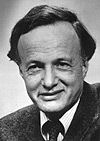
1986 - Nobel Prize for Chemistry
John Polányi
(born Jan 23, 1929, Berlin)
"For contributions to the development of a new field of research in chemistry - reaction dynamics." In particular, Polanyi was cited for "the method of infrared chemiluminescence, in which the extremely weak infrared emission from a newly-formed molecule is measured and analysed, and for his application of this method to elucidate the detailed energy disposal during chemical reactions" Founder of Reaction Dynamics.
John Charles Polanyi was born of Hungarian parents, Michael and Magda Elizabeth Polanyi. The family moved to England in 1933. His father, Michael Polanyi, another great chemist, was successively Professor of Chemistry and of Philosophy at Manchester University. John entered Manchester University 1946, just in time to attend his father's last lectures. He obtained his B.Sc. in 1949 and his Ph.D. in 1952. John Polanyi credits these years at Manchester University with having supplied him with the right questions to ask. The molecular basis for chemical reaction became the subject of the work for which, thirty-five years later, he received this Nobel Prize. He was a postdoctoral fellow at Princeton University and the National Research Council, Canada.
He has served on the Prime Minister of Canada's Advisory Board on Science and Technology, the Premier's Council of Ontario, as Foreign Honorary Advisor to the Institute for Molecular Sciences, Japan, and as Honorary Advisor to the Max Planck Institute for Quantum Optics, Germany. He is presently on the Board of the Steacie Institute for Molecular Sciences, Canada.
He was a founding member of both the Committee on Scholarly Freedom of the Royal Society, and a further international human rights organization, the Canadian Committee for Scientists and Scholars, of which he is the current President. Additionally he was the founding Chairman of the Canadian Pugwash Group in 1960, and has been active for 35 years in International Pugwash. He has written extensively on science policy, the control of armaments, and peacekeeping. He is co-editor of a book, The Dangers of Nuclear War, and was a participant in the recent Canada 21 study of a 21st-century defence posture for Canada. He was co-chair (with Sir Brian Urquhart) of the Department of Foreign Affairs International Consultative Committee on a Rapid Response Capability for the United Nations.
In honor of the achievement of John Charles Polanyi, the Government of the Province of Ontario has established a fund to provide annually up to five prizes to outstanding young researchers in the early stages of their career who are currently working at an Ontario university.
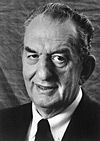
1994 - Nobel Prize for Chemistry
George Olah
(born May 22, 1927, Budapest)
"For his contribution to carbocation chemistry: the study of hydrocarbons, the ingredients of oil and natural gas, and his discovery of new ways to use them." Discovered "super-acids."
George Olah grew up between the two world wars and received a rather solid general education, the kind middle class children enjoyed in a country whose educational system had its roots dating back to the Austro-Hungarian Monarchy. He attended a Gymnasium (a combination of junior and senior high school) at one of the best schools in Budapest run by the Piarist Fathers, a Roman Catholic order [as did de Hevesy]. A strict and demanding curriculum heavily emphasizing the humanities included 8 years of Latin, with German and French as other obligatory languages. Though his main interest was in the humanities, he started to study chemistry upon entering the Technical University of Budapest, attracted by the wide diversity it offered. Organic chemistry particularly intrigued him and he was fortunate later to become a research assistant to the great Professor Geza Zemplen. Dr. Oláh left Hungary in 1956 soon after the failed uprising against Communist rule and moved to Canada. He got a position at Dow. He would later move to the United States. He was offered a position to join a small exploratory research laboratory along with two of his original Hungarian Collaborators, including Steven Kuhn. He was now positioned for greatness...
He and his colleagues discovered that extremely strong acids, called superacids, could be used to modify hydrocarbons to make them easier to study. These discoveries helped give the world more effective oil refining, lead-free gasoline and has enabled scientists to make plastics and other petroleum-based products with less damage to the environment.
In the summer of 1965 he was invited to join Case-Western Reserve University in Cleveland, Ohio and returned to academic life as a professor with the added responsibility of becoming also Department Chairman. George Oláh has 85 patents from seven countries, including four for the transformation of natural gas into the type of hydrocarbons used in gasoline.
Dr. Olah was awarded the prestigious Priestly Award on March 15th 2005.
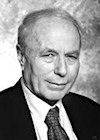
2004 - Nobel Prize for Chemistry
Ferenc Herskó
(born Dec. 31, 1937, Karcag, Hungary)
Prof. Hershko shared the 2004 Nobel Prize for Chemistry with Aaron J. Ciechanover (Ciechanover, Aaron J.) and Irwin Rose (Rose, Irwin) for their joint discovery of the mechanism by which the cells of most living organisms remove unwanted proteins. In more scientific terms, for the discovery of “protein decomposition mediated by ubiquitin”, i.e. for the identification of the cellular emergence of various diseases. The ubiquitin-proteasome pathway has a critical role in maintaining the homeostasis of cells and is believed to be involved in the development and progression of diseases such as: cancer, muscular and neurological diseases (such as cystic fibrosis), immune and inflammatory responses.
Hershko emigrated to Israel in 1950 where he received his M.D. in 1965 and his Ph. D in 1969 from the Hebrew University-Hadassah Medical School in Jerusalem. He is currently a Distinguished Professor at the Rappaport Faculty of Medicine at the Technion in Haifa. His son followed in his father's footsteps and studied medicine in Budapest.
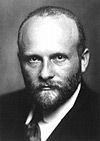
1914 - Nobel Prize for Physiology / Medine
Robert Bárány
(born Apr. 22, 1876, Vienna, Austria - died Apr. 8, 1936, Uppsala, Sweden)
"For his work on the physiology and pathology of the vestibular apparatus."
Robert Barany was the eldest of six children. When he was quite young he contracted tuberculosis of the bones, which resulted in permanent stiffness of his knee joint. It is thought that this illness first led him to take an interest in medicine. After he completed his medical studies at Vienna University in 1900, he developed a strong interest in neurological problems.
He followed up the theories of Flourens, Purkinje, Mach, Breuer and others, and clarified the physiology and pathology of human vestibular apparatus for which he was awarded the Nobel Prize. The news of this award reached Bárány in a Russian prisoner-of-war camp; he had been attached to the Austro-Hungarian army as a civilian surgeon and had tended soldiers with head injuries, which enabled him to continue his neurological studies on the correlation of the vestibular apparatus, the cerebellum and the muscular apparatus. Following the personal intervention of Prince Carl of Sweden on behalf of the Red Cross, he was released from the prisoner-of-war camp in 1916 and was presented with the Nobel Prize by the King of Sweden at Stockholm.
During the latter part of his life Bárány studied the causes of muscular rheurmatism, and continued working on a book dealing with this subject even after he had suffered a stroke and was partially paralysed.
Robert Bárány's oldest son, Ernst Bárány, having hesitated between the study of radio electronics and hearing, between the study of physics and medicine, finally became a professor of medicine at the University of Uppsala. His son, Anders Bárány, however, is now professor of physics at the University of Stockholm, president of the Swedish Physical Society, and serves the Nobel Committee for Physics.
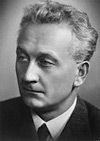
1937 - Nobel Prize for Physiology / Medine
Albert Szent-Györgyi von Nagyrápolt
(born Sep. 16, 1893, Budapest - died Oct. 22, 1986, Woods hole, Massachusetts)
"For his discoveries in connection with the biological combustion process with special reference to vitamin C & the catalysis of fumaric acid." First to isolate Vitamin C which he found in abundance in Hungarian paprika.
Albert Szent-Gyorgyi was the son of Nicolaus von Szent-Györgyi, a great landed proprietor whose father, Joseph Lenhossék, and brother Michael were both Professors of Anatomy in the University of Budapest. He matriculated in 1911 and entered his uncle's laboratory where he studied until the outbreak of World War I when he was mobilized. He served on the Italian and Russian fronts, gaining the Silver Medal for Valour, and he was discharged in 1917 after being wounded in action. He completed his studies in Budapest and then worked successively with the pharmacologist, G. Mansfeld at Pozsony, with Armin von Tschermak at Prague, where he studied electrophysiology, and with L. Michaelis in Berlin, before he went to Hamburg for a two-year course in physical chemistry at the Institute for Tropical Hygiene.
Szent-Györgyi's early researches at Groningen concerned the chemistry of cell respiration. He described the interdependence of oxygen and hydrogen activation and made his first observations on co-dehydrases and the polyphenol oxidase systems of plants. He also demonstrated the existence of a reducing substance in plant and animal tissues. At Cambridge and during his early spell in the United States, he isolated from adrenals this reducing substance, which is now known as ascorbic acid. Returning to Cambridge in 1929, he later described the pharmacological activity of the nucleotides with Drury.
On his return to Hungary, he noted the anti-scorbutic activity of ascorbic acid and discovered that paprika (capsicum annuum) was a rich source of vitamin C. His persistent studies of biological oxidation led to the recognition of the catalytic function of the C4-dicarboxylic acids, the discovery of «cytoflav» (flavin) and a recognition of the biological activity and probable vitamin nature of flavanone (vitamin P).
In 1938 he commenced work on muscle research and quickly discovered the proteins actin and myosin and their complex. This led to a reproduction of the fundamental reaction of muscle contraction which formed the foundation of muscle research in the following decades. The preservation of biological material in glycerine, which has had extensive application including agricultural use in the preservation of sperm, has resulted from his more recent work. He has also developed the use of rabbit psoas muscle as an experimental material, published theories on the problems of energetics and investigated the regulation of growth and cell membrane potential, and the hormonal function of the thymus gland.
Dr. Daniel Lowy of The University of Memphis (now at the US Naval Research Laboratory in Washington, D.C.) adds: Szentgyörgyi's co-worker was Gábor Fodor, member of the Hungarian Academy of Science, formerly at the University of Szeged, then - until his death - Chair Professor of Organic Chemistry at West Virginia University in Morgantown.
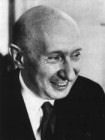
1961 - Nobel Prize for Physiology / Medine
George von Békésy
(born Jun. 3, 1899, Budapest - died Jun. 13, 1972, Honolulu, Hawaii)
"For his discoveries concerning the physical mechanisms of stimulation within the cochlea."
The son of Alexander von Békésy, a diplomat, and his wife, Paula, he received his early education in Munich, Constantinople, Budapest, and in a private school in Zurich. Having passed the Swiss "Maturitätsprüfung" he studied chemistry at the University of Berne. After a short military service he received his Ph.D. in Physics in 1923 from the University of Budapest.
Later on he entered the services of the Hungarian Post Office in Budapest where he stayed until 1946. He worked one year at the Central Laboratory of Siemens and Halske A.G. in Berlin, at that time one of the centers in the development of telecommunication. His work in the research laboratory of the Hungarian Post Office was concerned mainly with problems of long-distance telephone transmission. The friendly and efficient atmosphere of this laboratory made it possible for him to spend considerable time in the study of the ear as a main component of the transmission system. Soon he became a nuisance to the autopsy rooms of the hospitals and the mechanical workshops of the Post Office. There they did not like to find their drill press full of human-bone dust in the morning. But the wonderful laboratory spirit helped to overcome all difficulties, except those produced by the destructions of World War II.
During the years 1939-1946 he was Professor of Experimental Physics at the University of Budapest, but left Hungary in 1946 for Sweden, where he was a guest of the Karolinska Institute and did research at the Technical Institute in Stockholm. It was during this period that he developed a new type of audiometer which is operated by the patient and has applications outside the field of hearing. For instance, it has permitted the determination of the change in sensitivity of the eye of pigeons during dark adaptation.
In 1947 he went to the United States and worked at Harvard University in the Psycho-Acoustic Laboratory. His interests turned to development of a mechanical model of the inner ear with nerve supply, the nerve supply being represented by the skin of the arm.
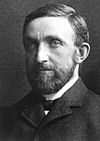
1905 - Nobel Prize for Physics
Fülöp von Lenárd
(born Jun. 7, 1862, Pozsony, Hungary - died May. 20, 1947, Messehausen, Germany)
"For his studies in x-rays and the cathode ray tube."
Philipp von Lenard studied physics successively at Budapest, Vienna, Berlin and Heidelberg under Bunsen, Helmholtz, Königsberger and Quincke and in 1886 took his Ph.D. at Heidelberg. Lenard's first work was done in the field of mechanics, when he published a paper on the oscillation of precipitated water drops and allied problems and in 1894 he published the Principles of Mechanics left behind by Hertz.
Soon he became interested in the phenomena of phosphorescence and luminescence. This was a development of the mysterious attraction which weak light appearing in darkness had had for him since his boyhood, when he had, with his school fellows, warmed fluorine crystals to make them luminescent. In 1888, when he was working at Heidelberg under Quincke, Lenard had done his first work with cathode rays. His research led him to the great discovery called the "Lenard Window." His research led to conclusions that conflicted with current theory and were not explained until 1905, when Einstein produced his quantitative law and developed the theory of quanta of light or photons, which was verified much later by Millikan. Lenard never forgave Einstein for discovering and attaching his own name to this law.
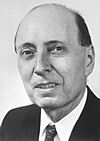
1963 - Nobel Prize for Physics
Eugene Wigner
(born Nov. 17, 1902, Budapest died Jan. 1, 1995, Princeton, New Jersey)
"For his contributions to the theory of the atomic nucleus and the elementary particles, particularly through the discovery and application of fundamental symmetry principles." Co-developed the atomic bomb and is known as the Founder of Nuclear Engineering.
The Hungarian version of Eugene Paul Wigner's name was Jenó Pál Wigner. During his lifetime he was a major player in the development of the atomic bomb, the design of commercial nuclear reactors, and the progress of nuclear science in general. Eugene Wigner's formal education was acquired in Europe; he obtained the Dr. Ing. degree at the Technische Hochschule Berlin. He naturalized a citizen of the United States on January 8, 1937, and had been since 1938 Thomas D. Jones Professor of Mathematical Physics at Princeton University - he retired in 1971. He was responsible for the Manhattan Project idea and letter to President Roosevelt. Received Fermi Award and shared the Atoms for Peace Award with fellow Hungarian Leo Szilárd.
Dr.Wigner worked on the Manhattan Project at the University of Chicago during World War II, from 1942 to 1945, and in 1946-1947 became Director of Research and Development at Clinton Laboratories. Official recognition of his work in nuclear research includes the U. S. Medal for Merit, presented in 1946; the Enrico Fermi Prize (U.S.A.E.C.) awarded in 1958; and the Atoms for Peace Award, in 1960. Dr. Wigner holds the Medal of the Franklin Society, the Max Planck Medal of the German Physical Society, the George Washington Award of the American-Hungarian Studies Foundation (1964), the Semmelweiss Medal of the American-Hungarian Medical Association (1965), and the National Medal of Science (1969). He was a member of the General Advisory Committee to the U.S. Atomic Energy Commission from 1952-1957, was reappointed to this committee in 1959 and served on it until 1964.
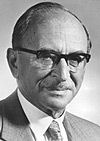
1971 - Nobel Prize for Physics
Dennis Gábor
(born Jun. 5, 1900, Budapest - died Feb. 9, 1979, London, UK)
"For his investigation and development of holography."
Adapted from his autobiography: The oldest son of Bertalan Gabor, director of a mining company, and his wife Adrienne, his life-long love of physics started suddenly at the age of 15. He could not wait until he got to the university, so he learned calculus and worked through the textbook of Chwolson, the largest at that time, in the next two years. He was fascinated by Abbe's theory of the microscope and by Gabriel Lippmann's method of color photography. With his late brother George, he built up a little laboratory in his home, where they could repeat most experiments which were modern at that time, such as wireless X-rays and radioactivity. Yet, when he reached university age, he opted for engineering instead of physics.
He graduated from the Technische Hochschule in Berlin in 1924 and received his Doctorate there in 1927, in electrical engineering. He would often sneak over from the TH as often as possible to the University of Berlin, where physics at that time was at its apogee, with Einstein, Planck, Nernst and v. Laue. His formal background in electrical engineering and love for physics blended perfectly and led him to some of the most profound discoveries of the 20th century.
In 1933, when Hitler came to power, he left Germany and after a short period in Hungary went to England, where he would eventually develop holography.
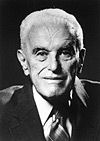
1994 - Nobel Prize for Economics
John Harsányi
(born May 29, 1929, Budapest - Aug. 9, 2000, Berkley, California, USA)
"For his pioneering analysis of equilibrium in the theory of non-cooperative games." Shared prize with A Beautful Mind's John Nash.
Adapted from his autobiography: The high school his parents chose for him was the Lutheran Gymnasium in Budapest, one of the best schools in Hungary, with such distinguished alumni as John von Neumann and Eugene Wigner. In 1937, the year he graduated, he won the First Prize in Mathematics at the Hungary-wide annual competition for high school students. However, he decided to study pharmacy partly because his family were pharmacists and also becuase as a pharmacy student he would obtain military deferment. Toward the end of the war, in 1944, the German's occupied Hungary and Harsanyi, a Jew, was sent to a forced labor camp in Austria. He escaped and was later hid by a Jesuit priest.
In 1946 he re-enrolled at the University of Budapest in order to obtain a Ph.D. in philosophy with minors in sociology and in psychology. From September 1947 to June 1948 he served as a junior faculty member at the University Institute of Sociology. There he met Anne Klauber, a psychology student who attended a course I was teaching and who later became his wife. But in June 1948, he had to resign from the Institute because the political situation no longer permitted them to employ an outspoken anti-Marxist as he had been. His wife realized that Hungary was quickly becoming a completely Stalinist country and that the only sensible course of action was to leave Hungary. They bravely crossed the Hungarian border illegally in 1950 over a marshy terrain and were very lucky not to be stopped or shot at by the Hungarian border guards.
They eventually landed in Australia, but his advanced degrees were not recognized. With limited English, he did factory work. In the evening he took economics courses at the University of Sydney where he received another M.A. In 1956 he was awarded a Rockefeller Fellowship enabling him and Anne to spend two years at Stanford University where he got a Ph.D. in economics.
In the early 1950s he published papers on the use of von Neumann-Morgenstern utility functions in welfare economics and in ethics and on the welfare economics of variable tastes. His interest in game-theoretic problems in a narrower sense was first aroused by John Nash's four brilliant papers, published in the period 1950-53, on cooperative and non-cooperative games, on two-person bargaining games and on mutually optimal threat strategies in such games, and on what we now call Nash equilibria.

1986 - Nobel Peace Prize
Elie Wiesel
(born Sep 30, 1928, Maramarossziget)
"For his dedication to peace, atonement, and human dignity."
During World War II, he, with his family and other Jews from the area, were deported to the German concentration and extermination camps, where his parents and little sister perished. Wiesel and his two older sisters survived. Liberated from Buchenwald in 1945 by advancing Allied troops, he was taken to Paris where he studied at the Sorbonne and worked as a journalist.
In 1958, he published his first book, La Nuit, a memoir of his experiences in the concentration camps. He has since authored nearly thirty books some of which use these events as their basic material. In his many lectures, Wiesel has concerned himself with the situation of the Jews and other groups who have suffered persecution and death because of their religion, race or national origin. He has been outspoken on the plight of Soviet Jewry, on Ethiopian Jewry and on behalf of the State of Israel today.
Great quote: "After the war, I had a teacher in France who was totally crazy. He spoke 30 languages, literally 30 languages. One day he learned that I knew Hungarian, and he didn't. He felt so bad that he learned Hungarian in two weeks. In two weeks he knew more about Hungarian literature than I did."
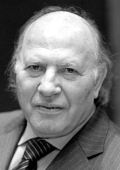
2002 - Nobel Prize for Literature
Imre Kertész
(born Nov. 9, 1929, Budapest)
"For writing that upholds the tragic experience of the individual against the barbaric arbitrariness of history."
The Acadeny singled out his 1975 debut novel, “Sorstalansag” (“Fateless”), in which he writes about a young man who is arrested and taken to a concentration camp but conforms and survives. 1944 he was deported to Auschwitz and from there to Buchenwald, where he was liberated in 1945. On his return to Hungary he worked from 1948 for a Budapest newspaper, Világosság, but was dismissed in 1951, as Hungary fell deeper in to Stalinism. After two years of military service, he supported himself as an independent writer and translator of German authors such as Nietzsche, Hofmannsthal, Schnitzler, Freud, Roth, Wittgenstein and Canetti, who have all had significance for his own writing.
